We took the train from Lisboa to Porto. The countryside of low, rolling hills was painted a mix of greens and browns at the height of summer. It’s not spectacular, but we did see a few charming towns and stations along the way. Portugal is a relatively small country so to get from the southern coast to the northern end only took about three hours.
Porto, as you might guess, is a port city. Up the Duoro river, countless vineyards manufacture port wine. They used to carry it down by boat to the warehouses in Vila Nova de Gaia, across the river from Porto, but these days most of the traffic on the river appears to be leisure craft, including tour boats mimicking the style of the old port-haulers.
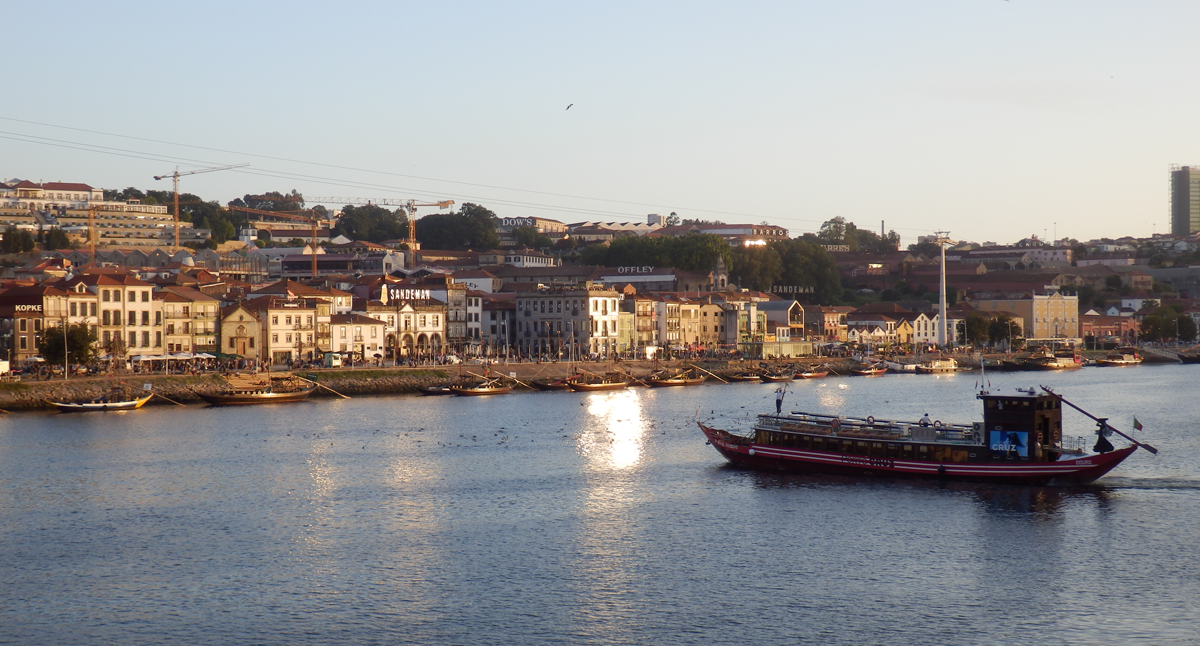
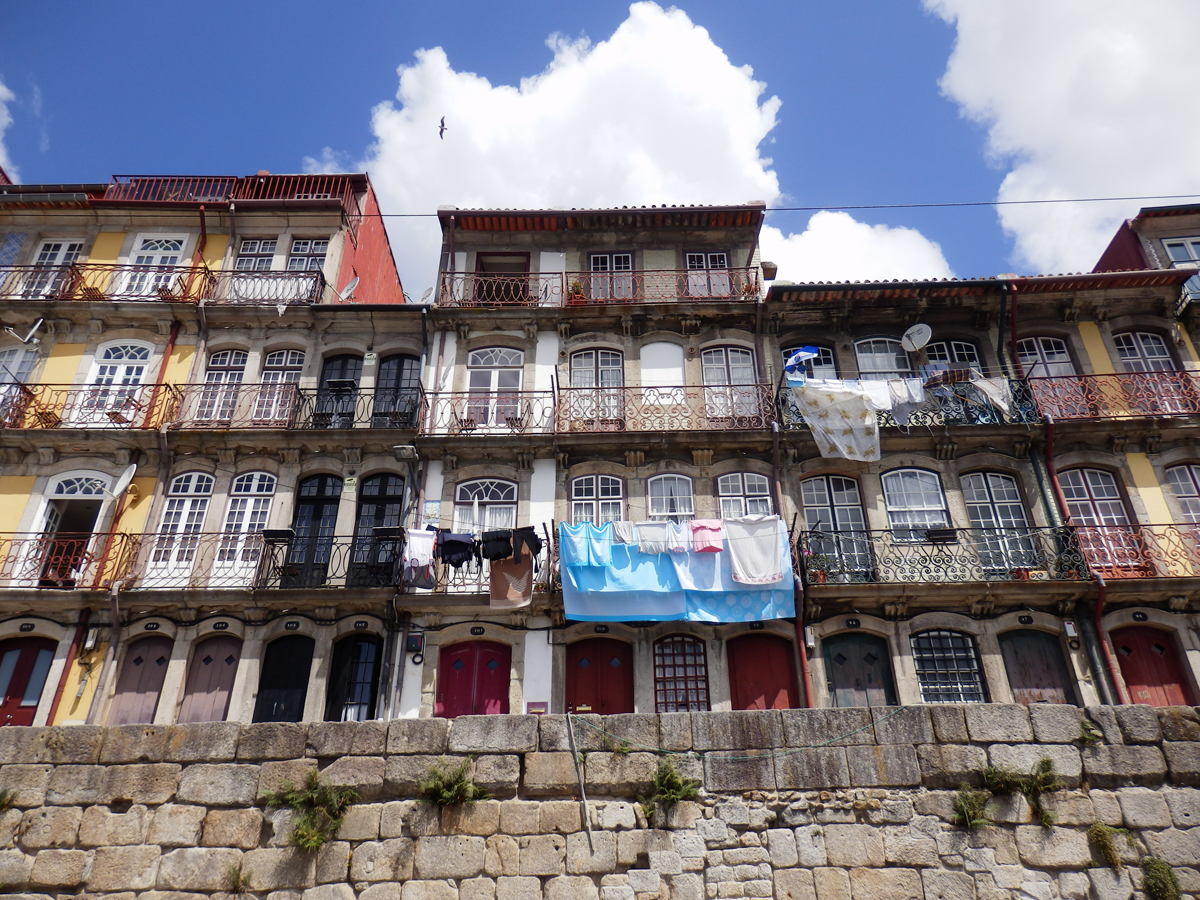
The old center of Porto spreads over a steep hill so unless you catch the streetcar, funicular, or a cab, you’ll get a good workout walking around. But you’ll be constantly rewarded with amazing views of the river, arched bridges, endless red tile roofs, and elegant church facades. There’s also some pretty good street art around town.
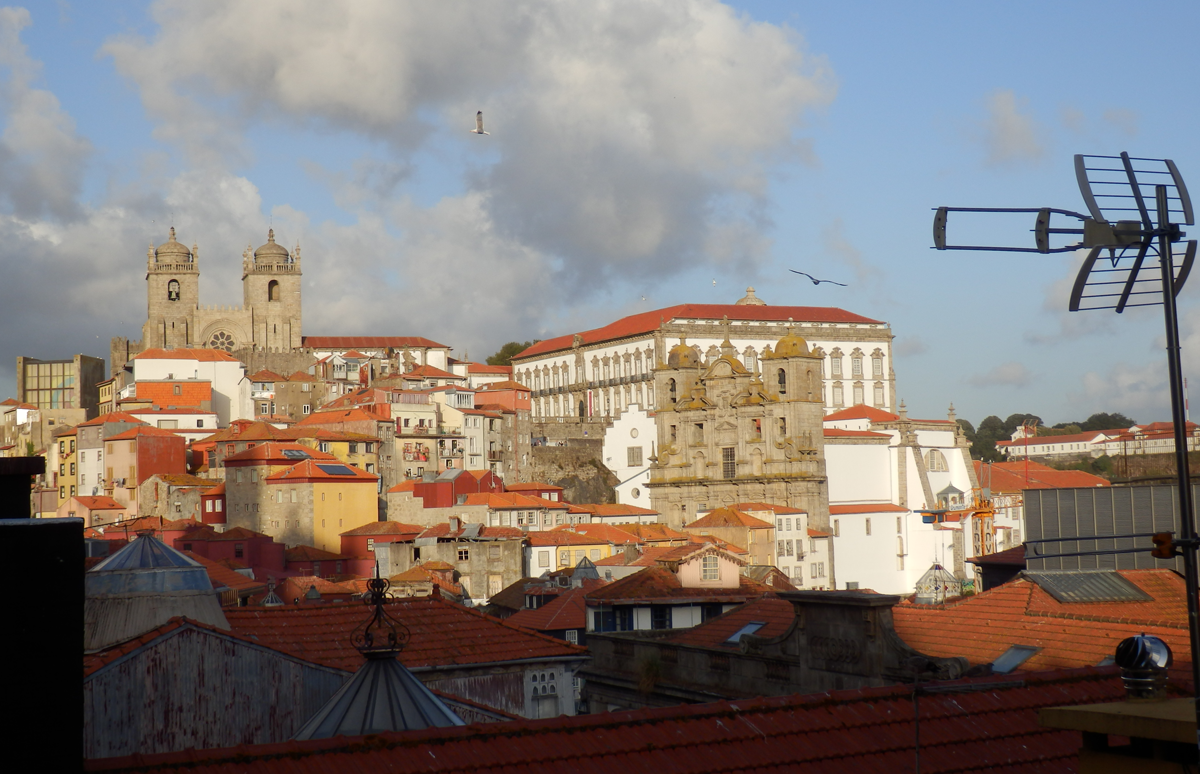
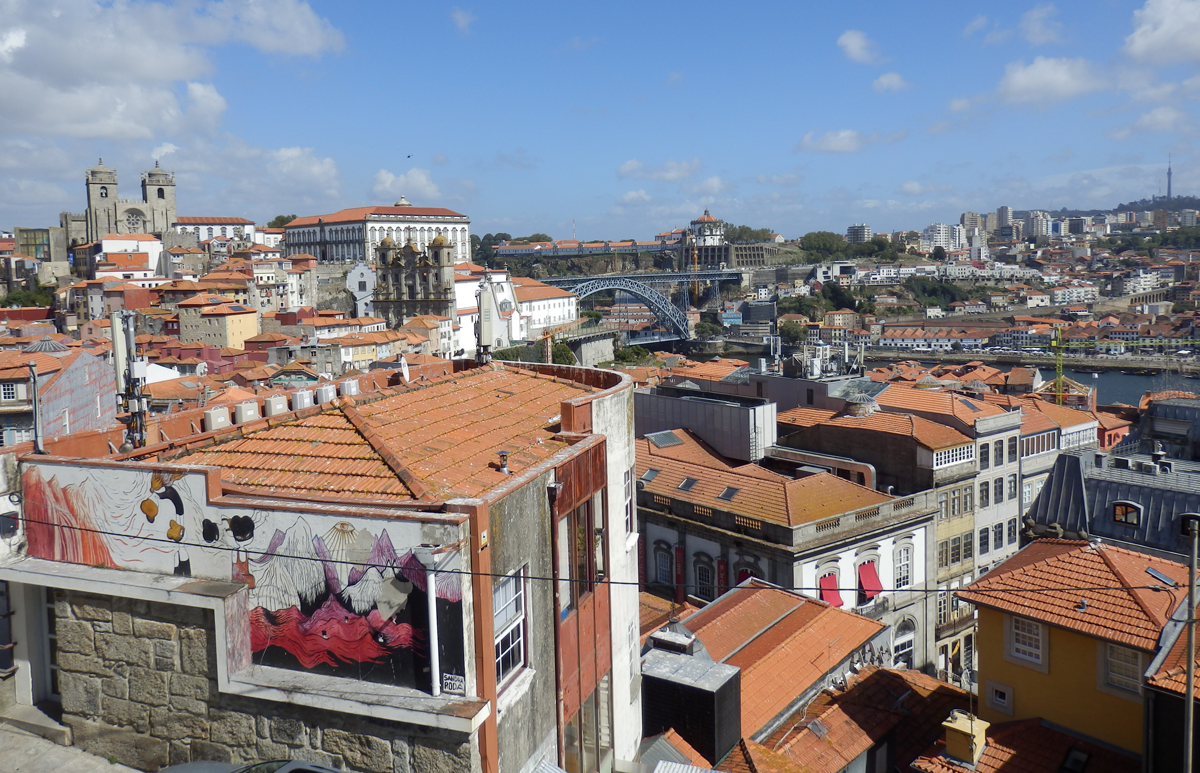
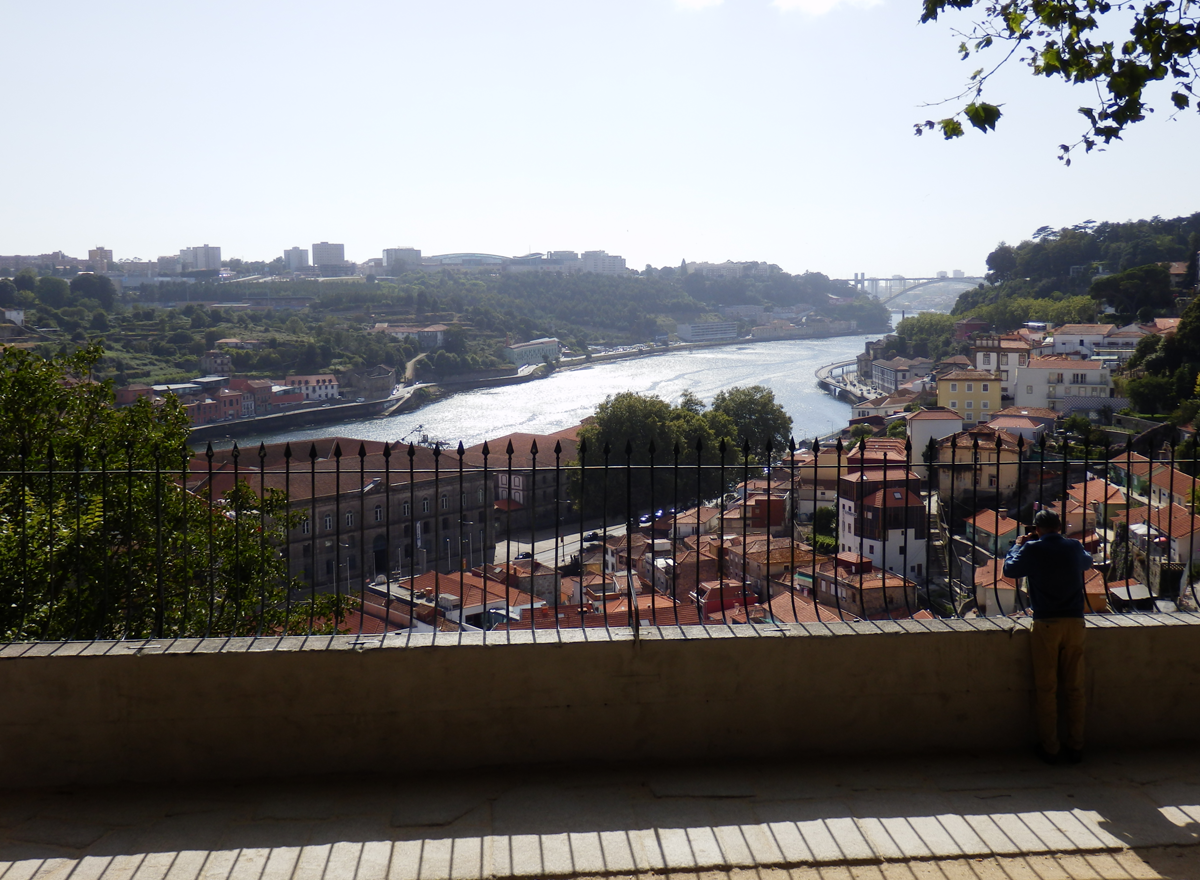
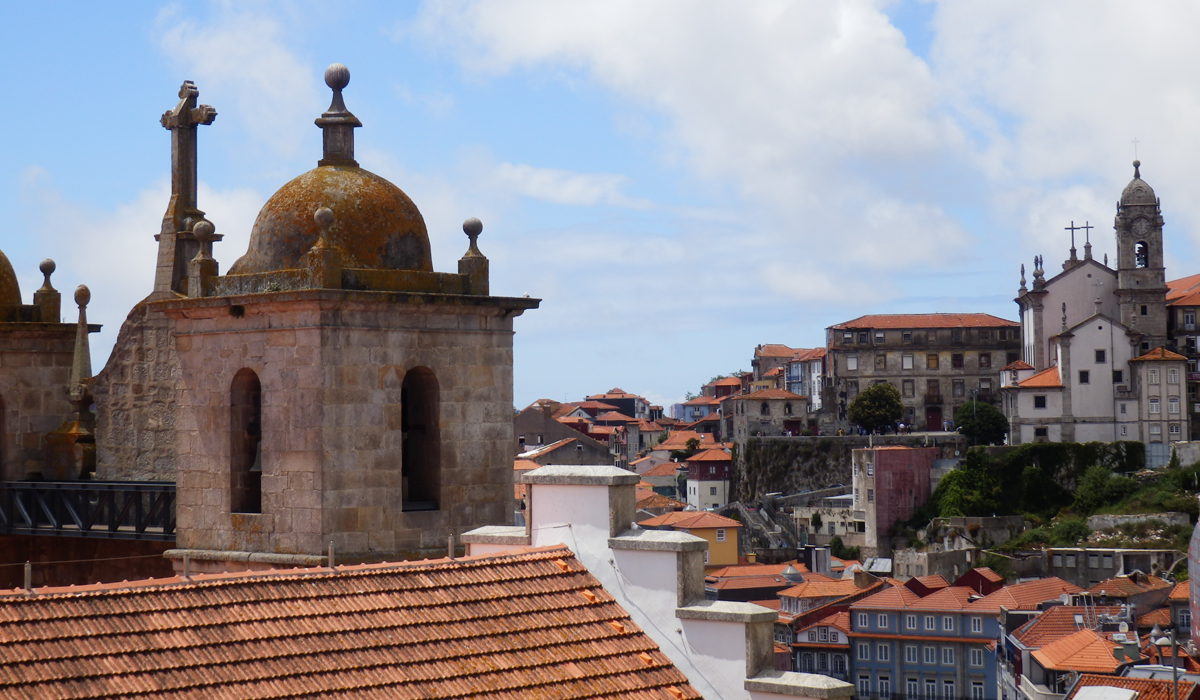

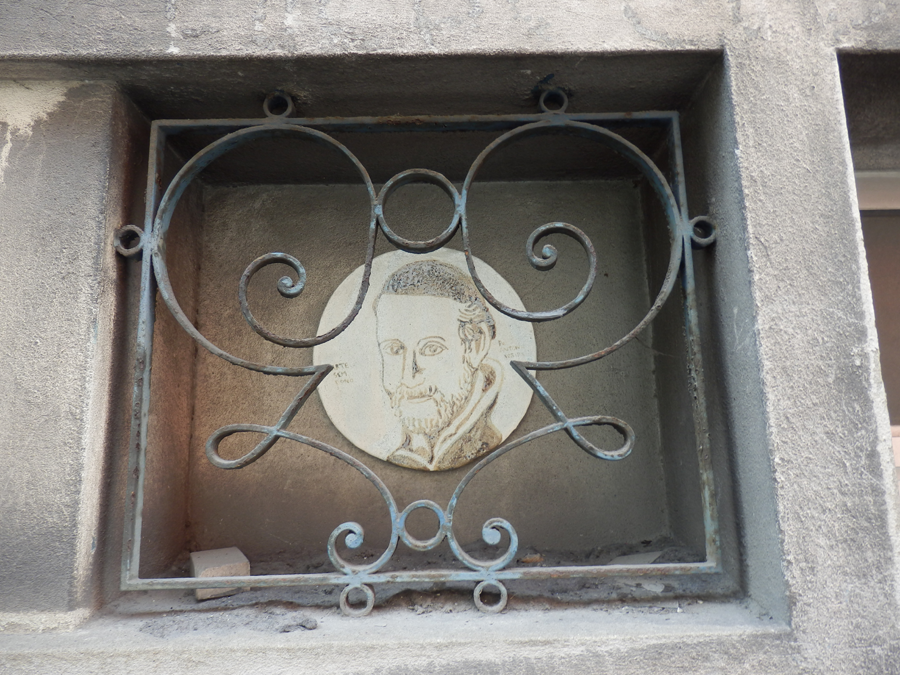
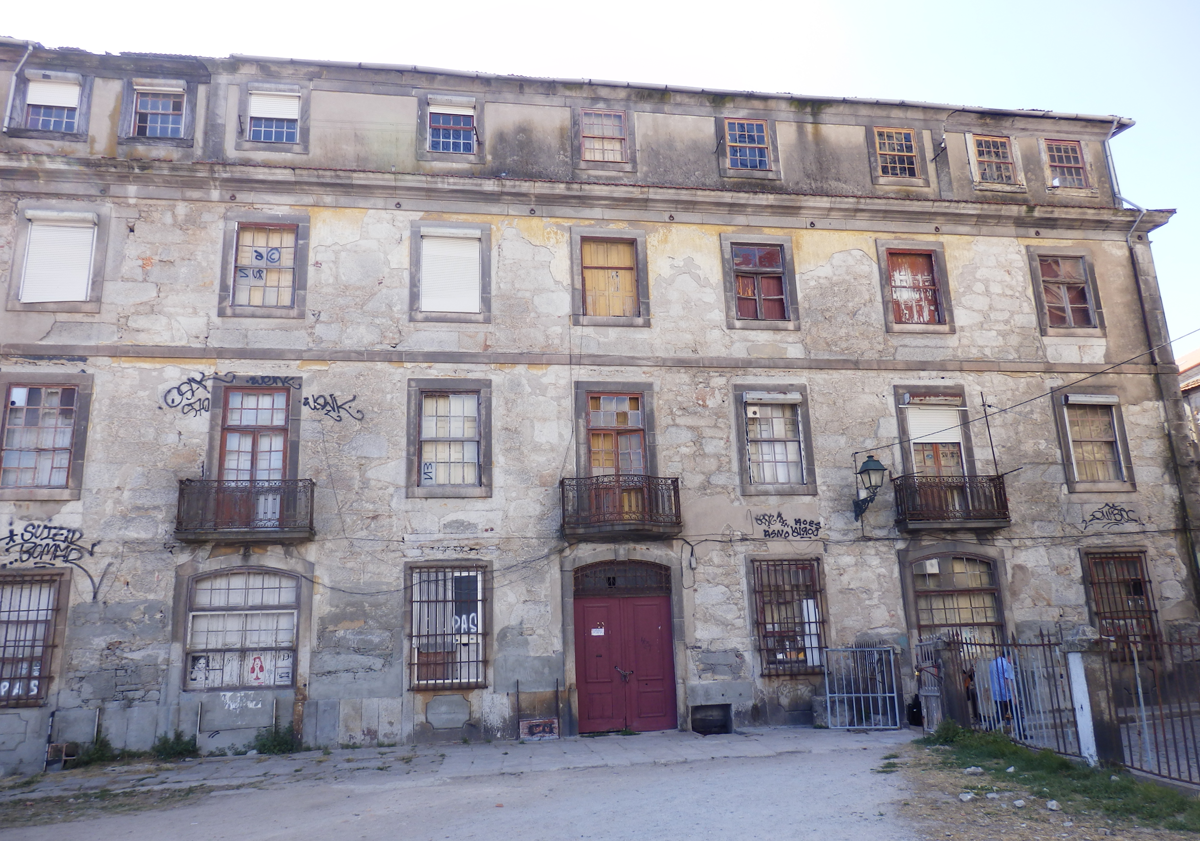
As elsewhere in Portugal, I was surprised by the number of empty, often gorgeous buildings. The parking lot of the building above is the viewing platform for some of the photos above.
At the top of the hill is The Clérigos Church, Igreja dos Clérigos, a baroque church turned museum with a huge bell tower. We didn’t have the gusto to climb its 240 steps after the hike up the hill just to reach the church, but we did walk around the inside.
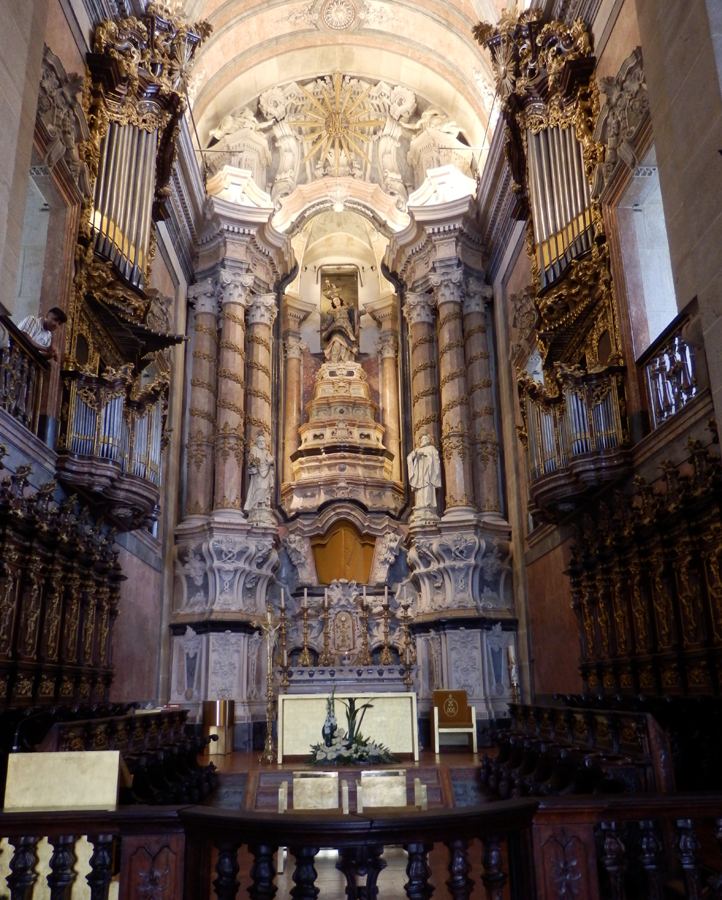
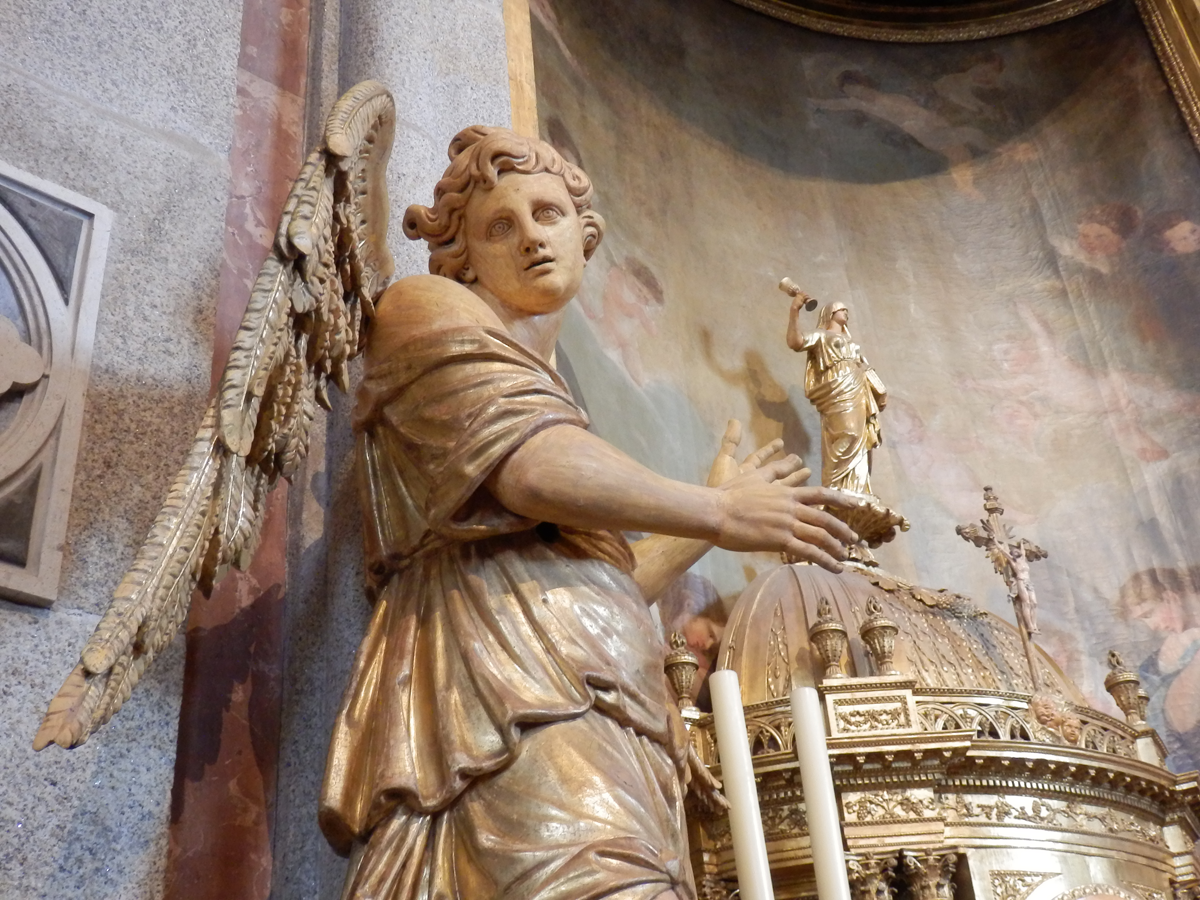
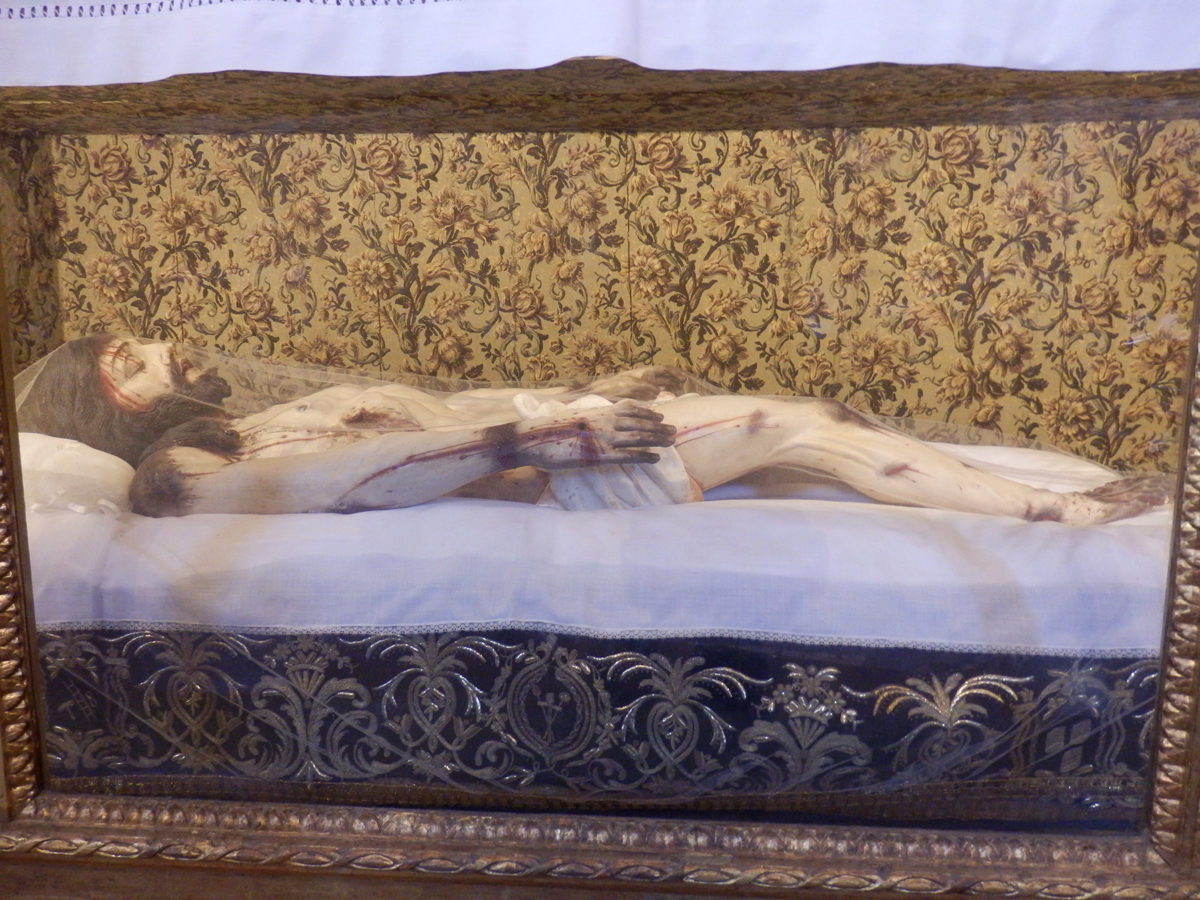
The hilltop neighborhood is nice too, with wide plazas and a mix of old and new. A trek through a small shopping center led us to a bookstore famous for being the inspiration for the magic wand shop in Harry Potter. There was a long line and an admission fee (which goes toward the purchase of any book) so we skipped that and meandered about, finding a block of beautiful Art Nouveau buildings, some of which housed Fado clubs – Portugal’s traditional folk music – or other clubs, restaurants and bars. I intended to return there for some late night entertainment but never managed it. Next time! There is the occasional bit of Deco, more than one church entirely covered in tile, intermingled with random modern – even a few Brutalist – buildings.
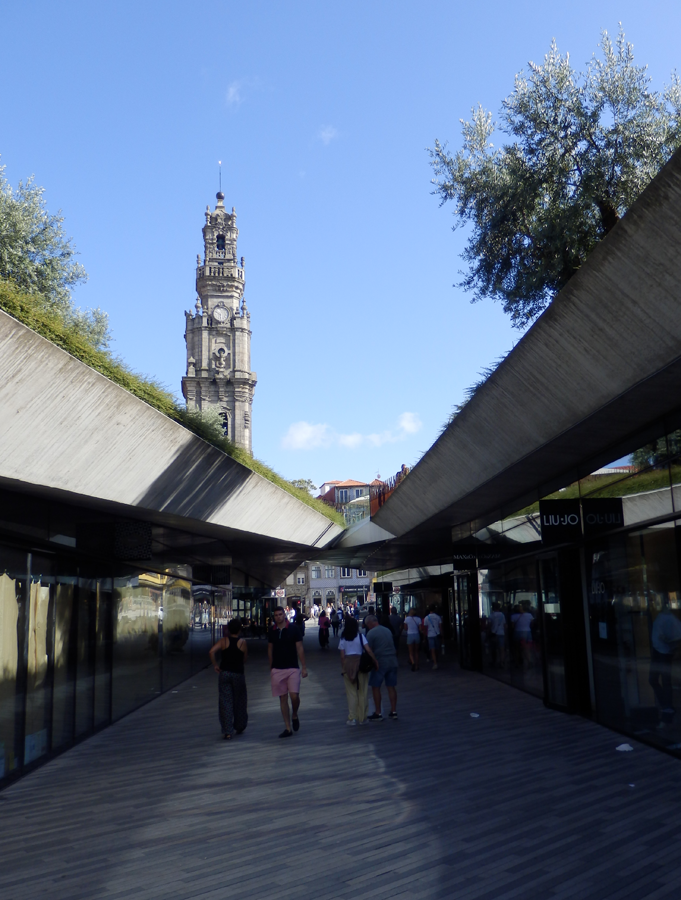
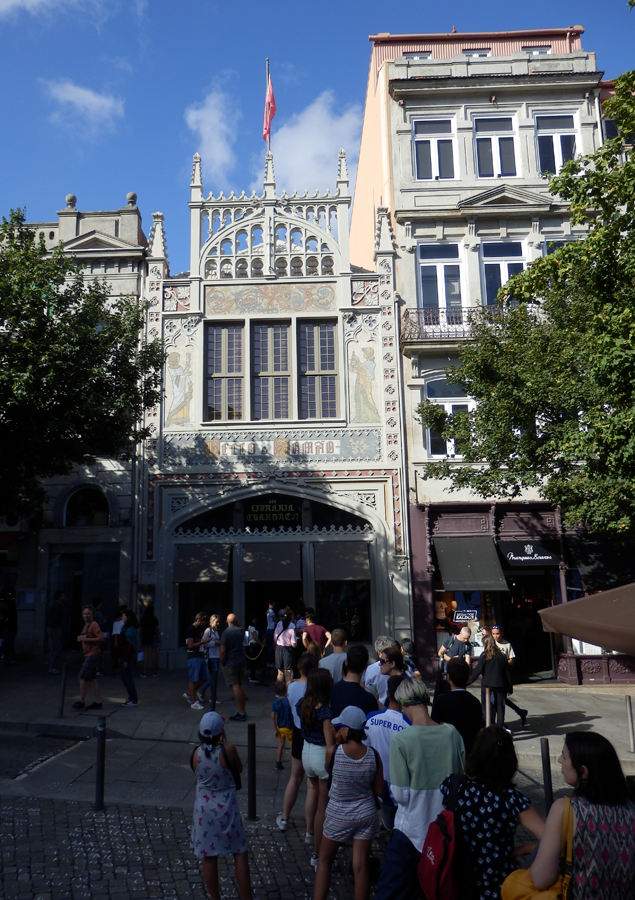
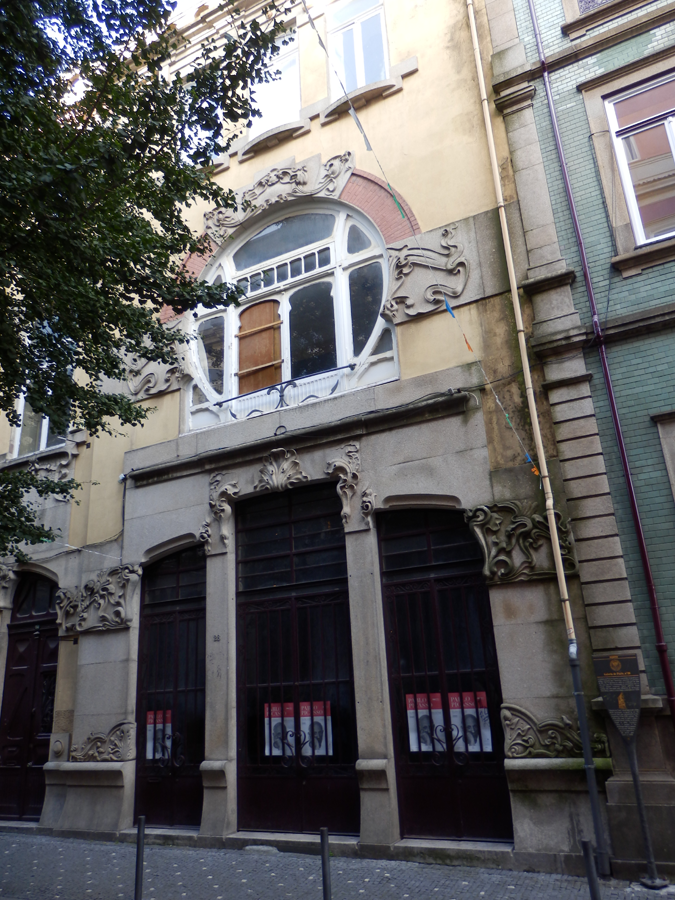
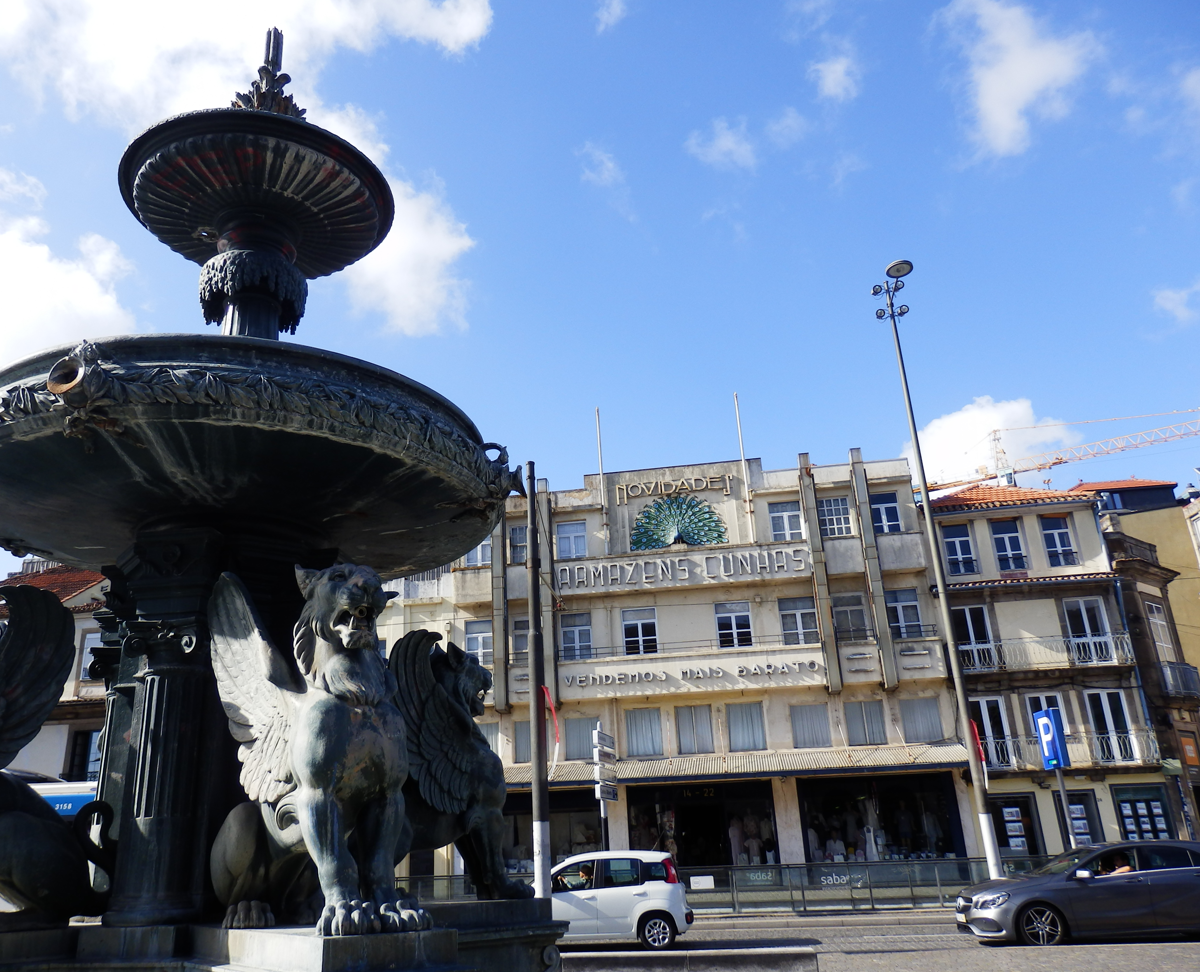
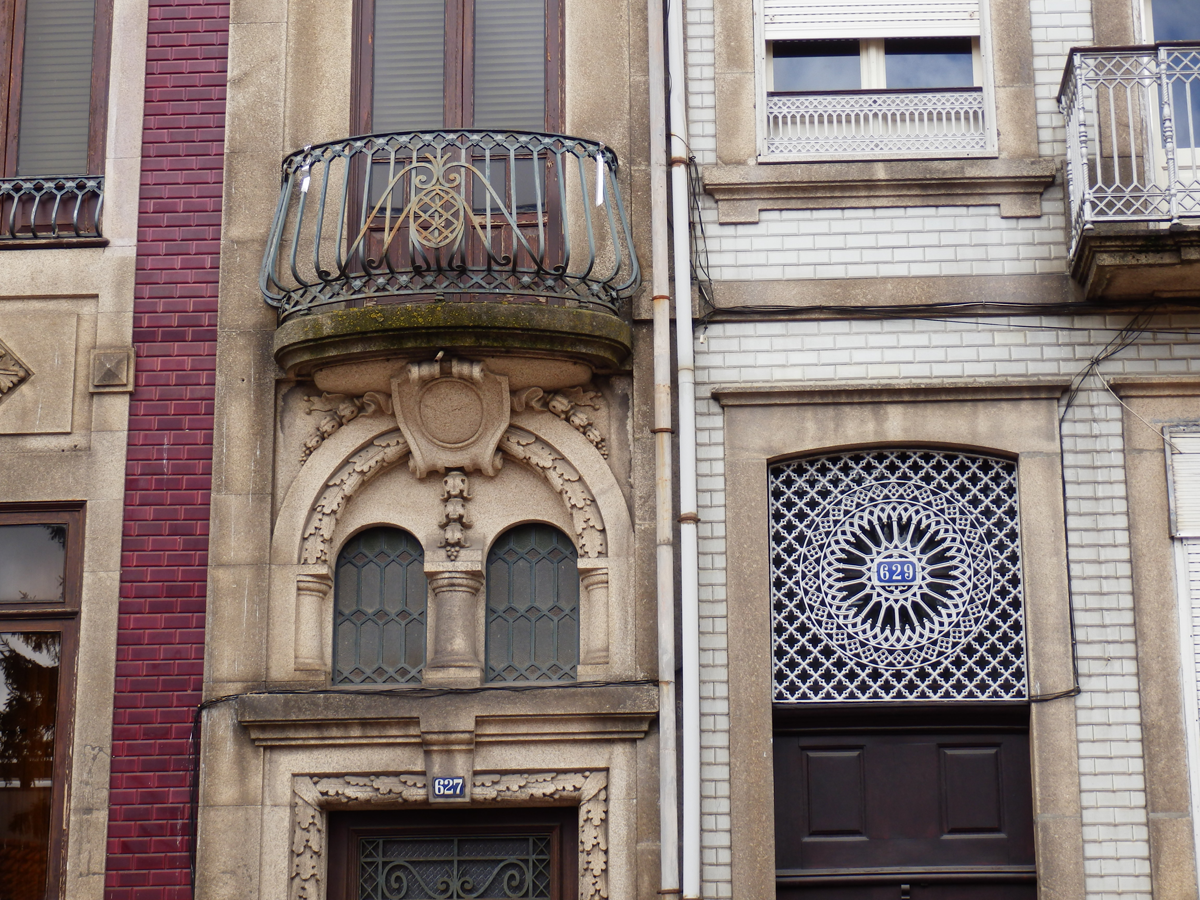
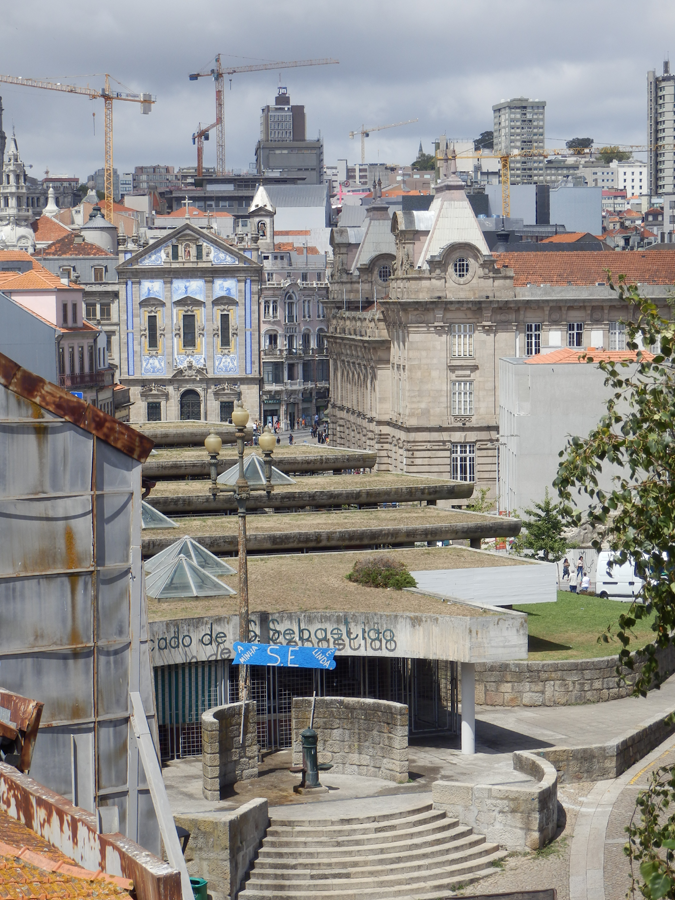
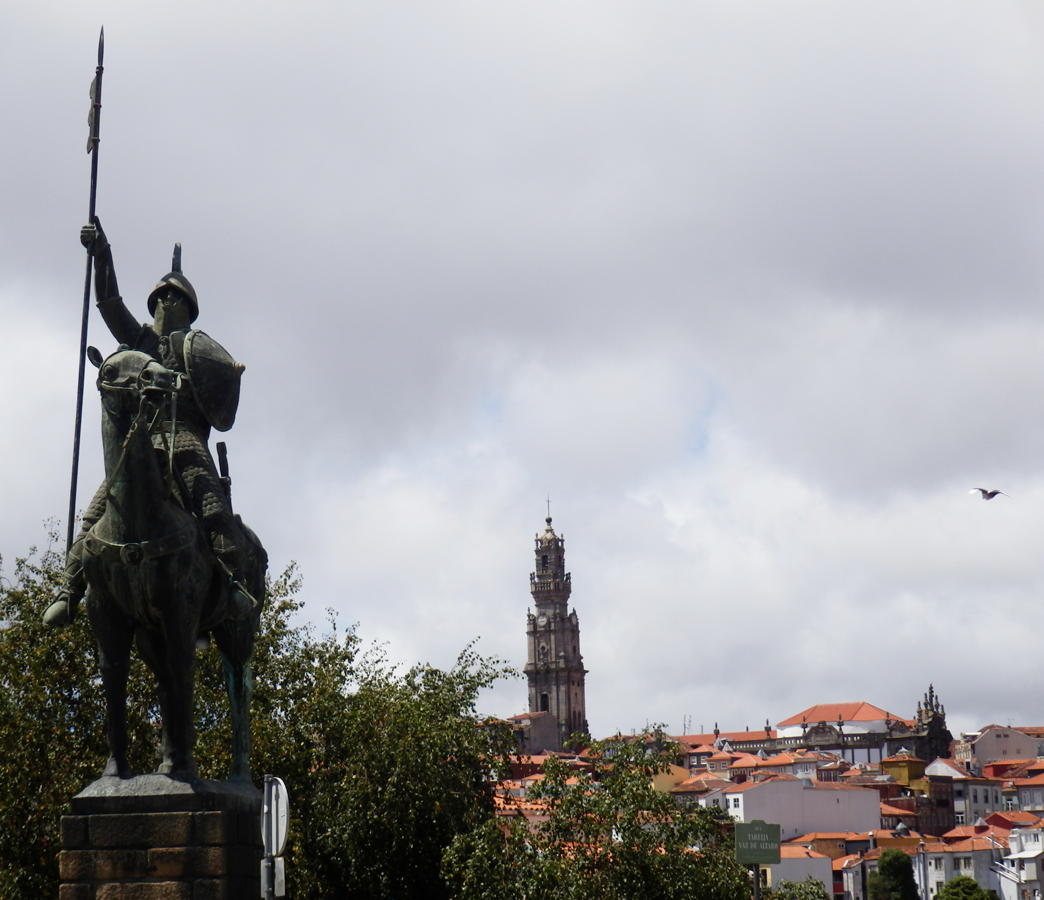
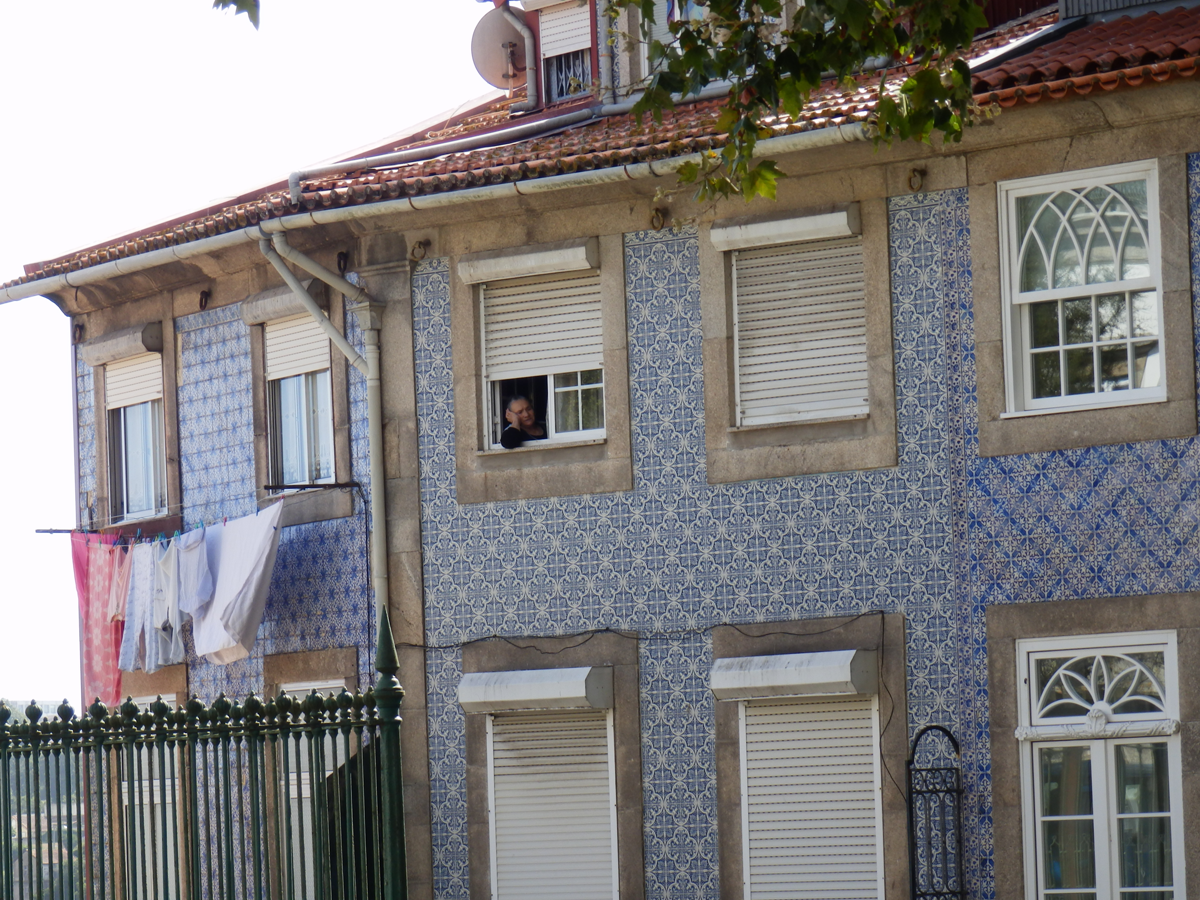
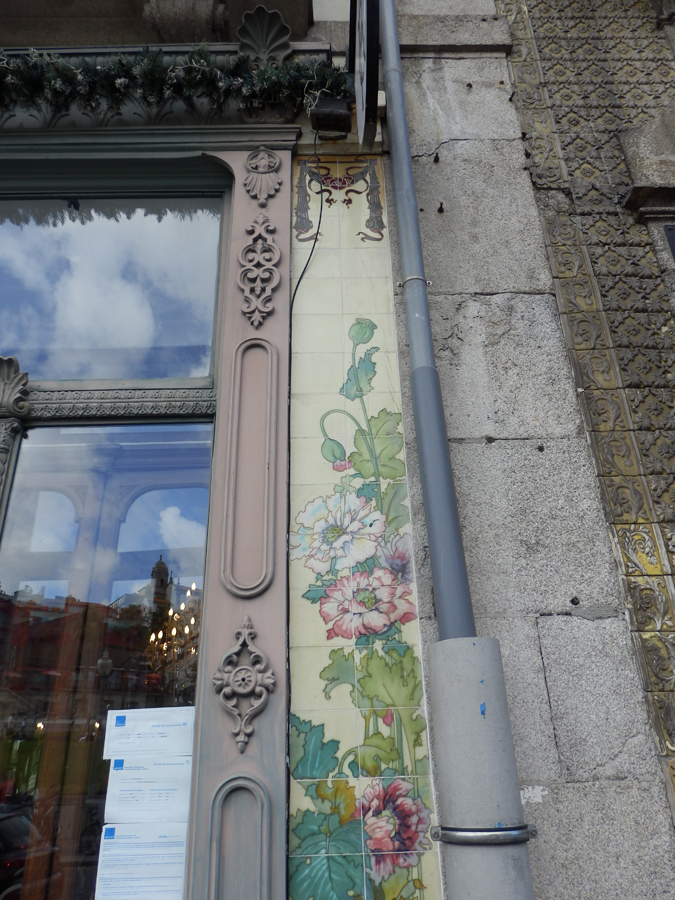
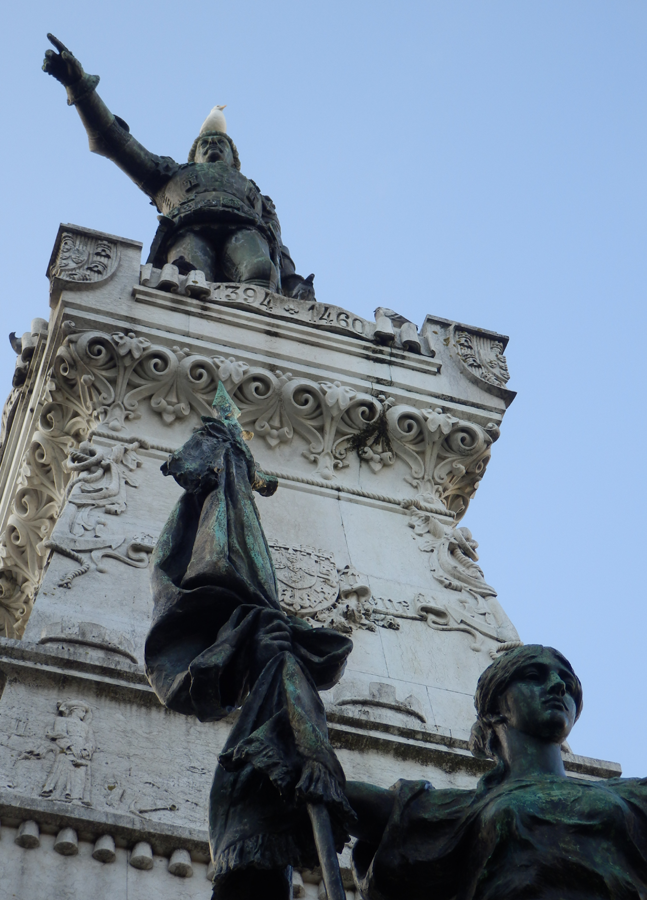
You may notice there is a seagull or bird of some sort in almost every shot on this page. It is not always intentional. They’re just always there.
We encountered this organ grinder a few times on our wanderings, feeding punch-card books into his device to make lovely music. He had a row of very fuzzy-feathered friends keeping watch, as well as a waif collecting donations. You can here a snippet I posted on youtube.
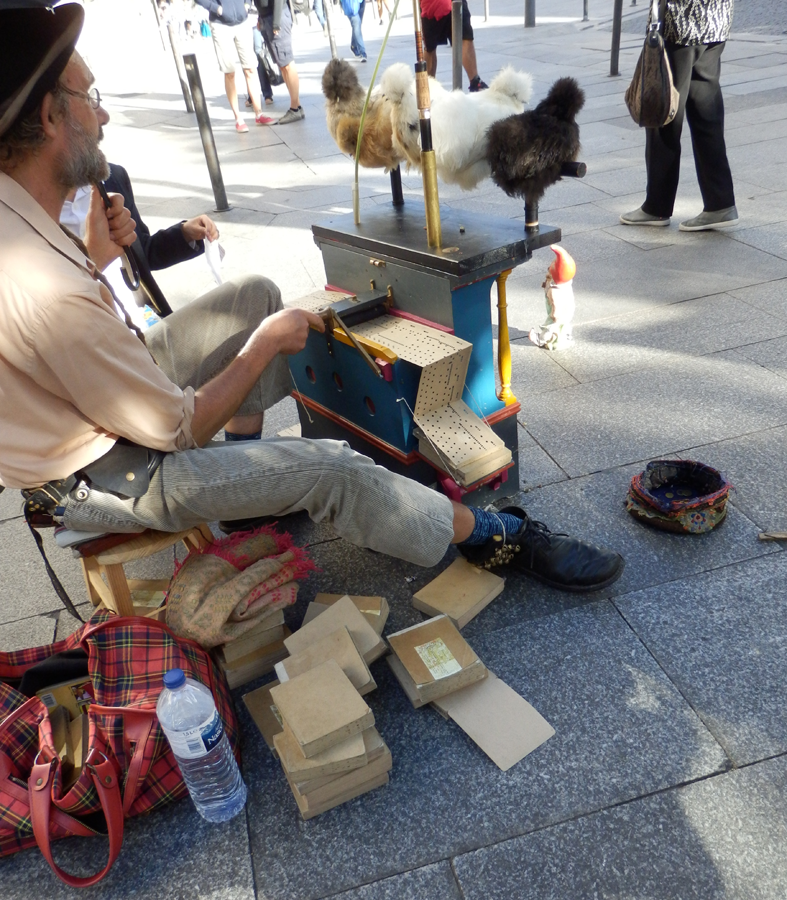
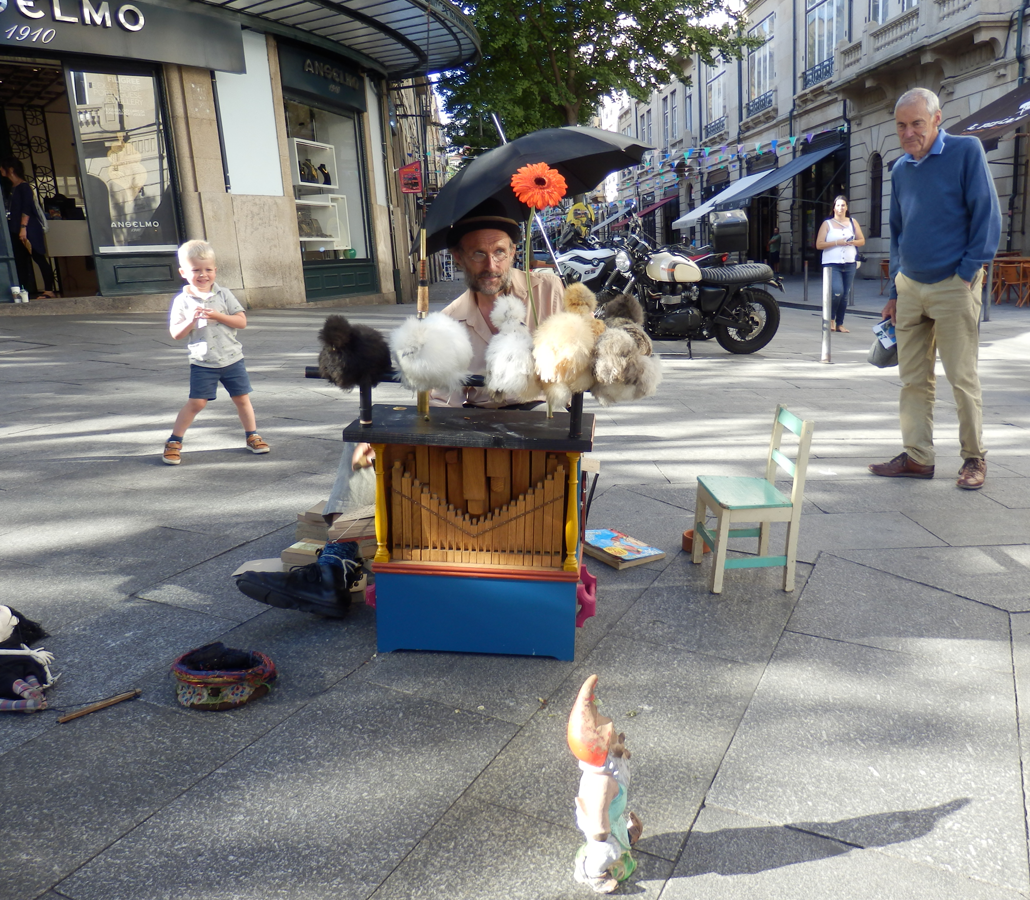
One of our cross-town, uphill jaunts was in search of a certain delicacy from Porto that had been recommended to us by reliable sources. Our guide book lead us to a place that specialized in this particular sandwich, Francesinha (meaning Little Frenchie or simply Frenchie in Portuguese.) It has ham, linguiça, sausage, and steak or roast meat, and is covered with melted cheese and drowned in a hot thick tomato and beer sauce. It’s a bit of a mess and best shared between at least two people, perhaps with a cardiologist within arm’s reach.
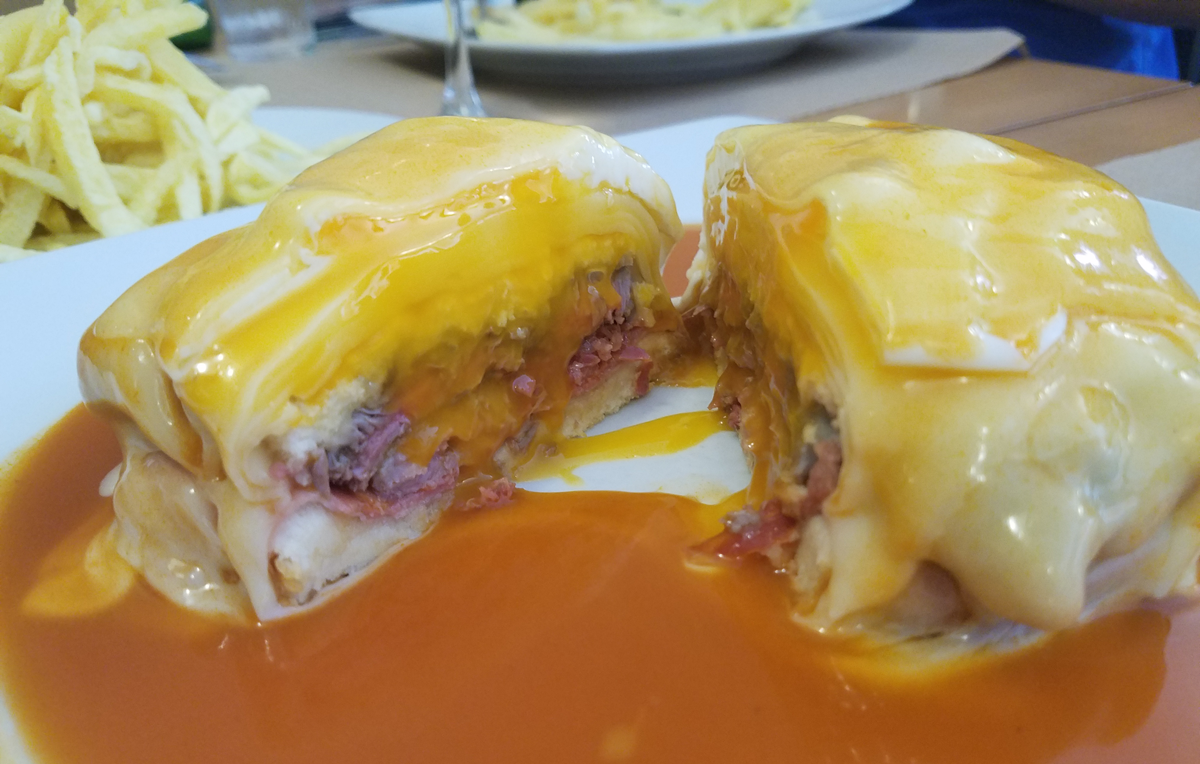
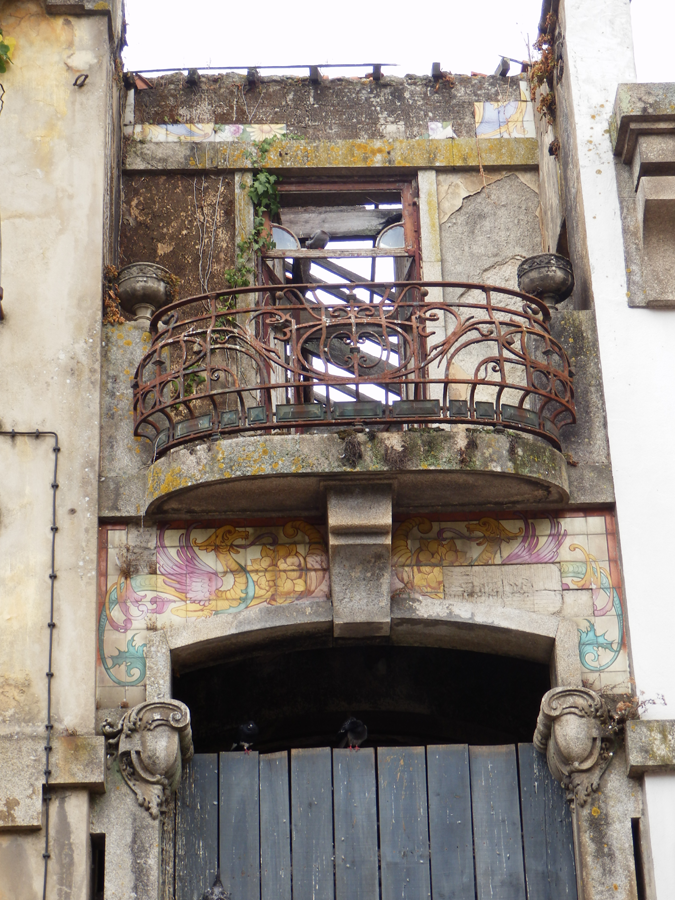
Near the Francesinha restaurant was this crumbling shell that once had glorious details. But it’s not just the stuff from the 18th and 19th century that had some aesthetic effort put into it. Even mundane apartment blocks from what I’m guessing were the 1970s were sometimes clad in tile.
Some of the buildings featured tiles with deep relief. The tile museum in Lisboa has information about the labor-intensive techniques required to produce them. Every walk around Porto took three times as long as it should’ve just because we kept stopping to gawk at tile. Sometimes we’d find an entire church covered in huge murals constructed entirely of porcelain mosaics. Magnificent.
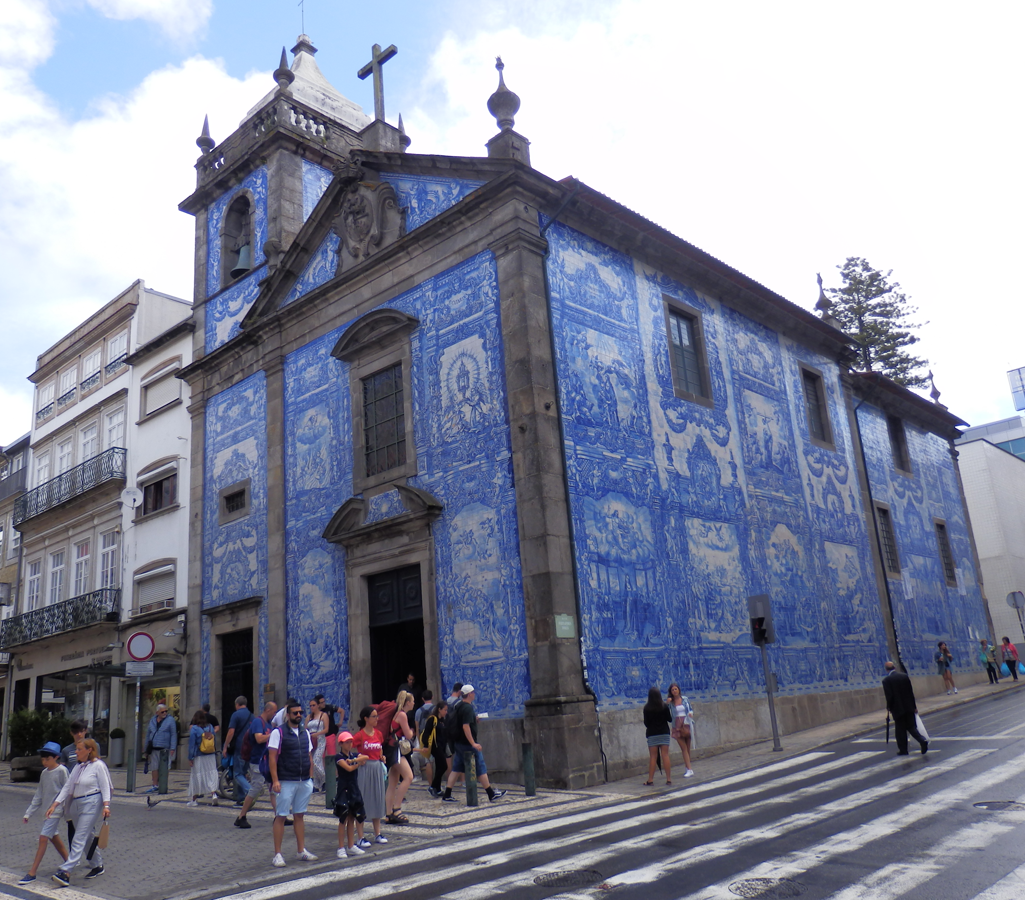
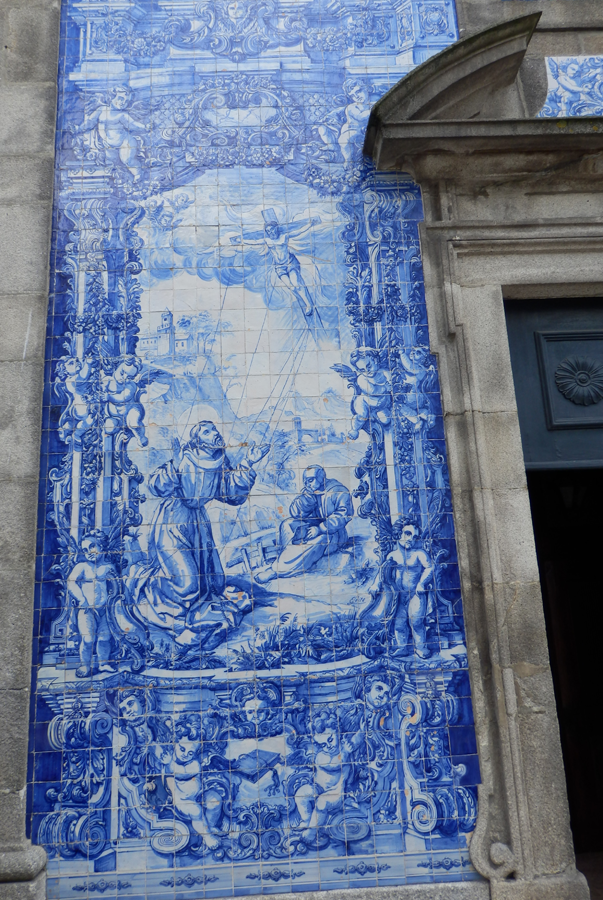
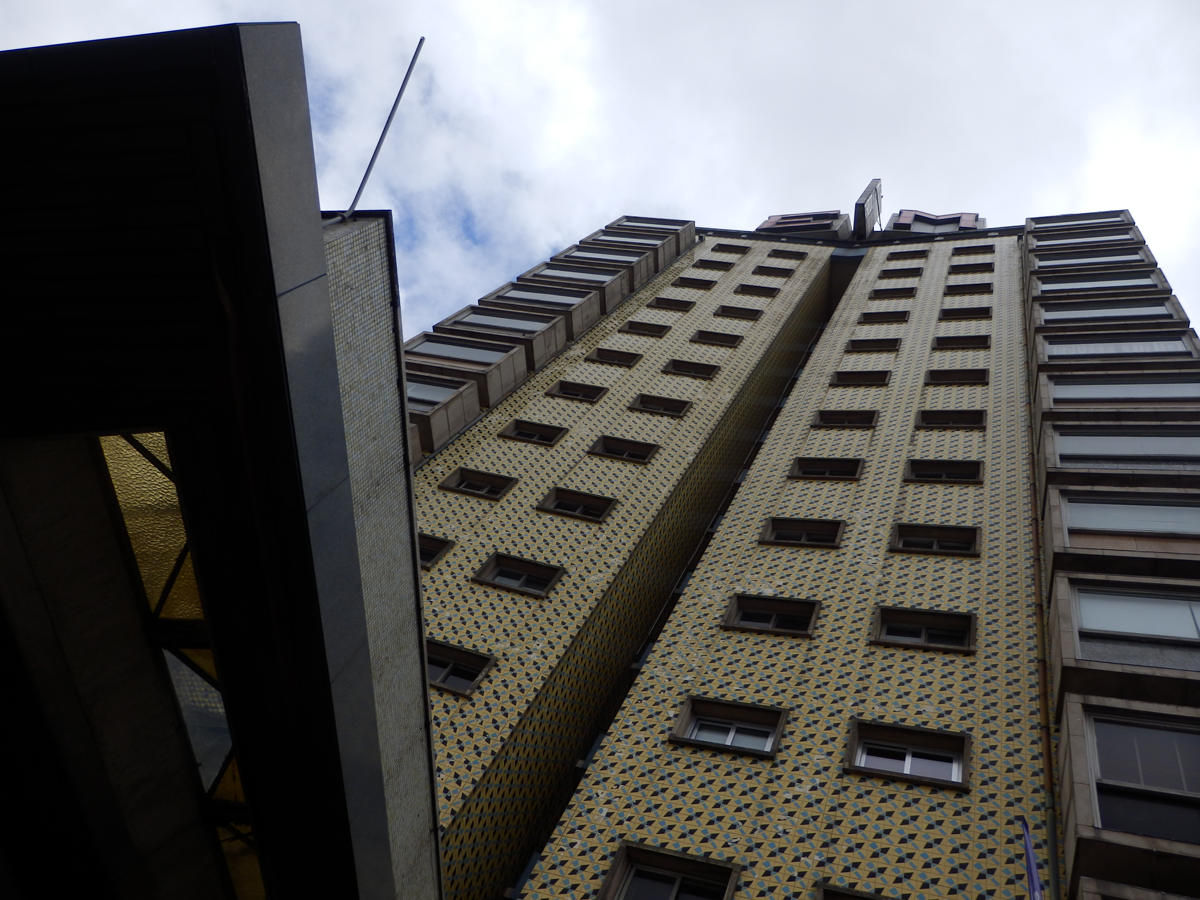
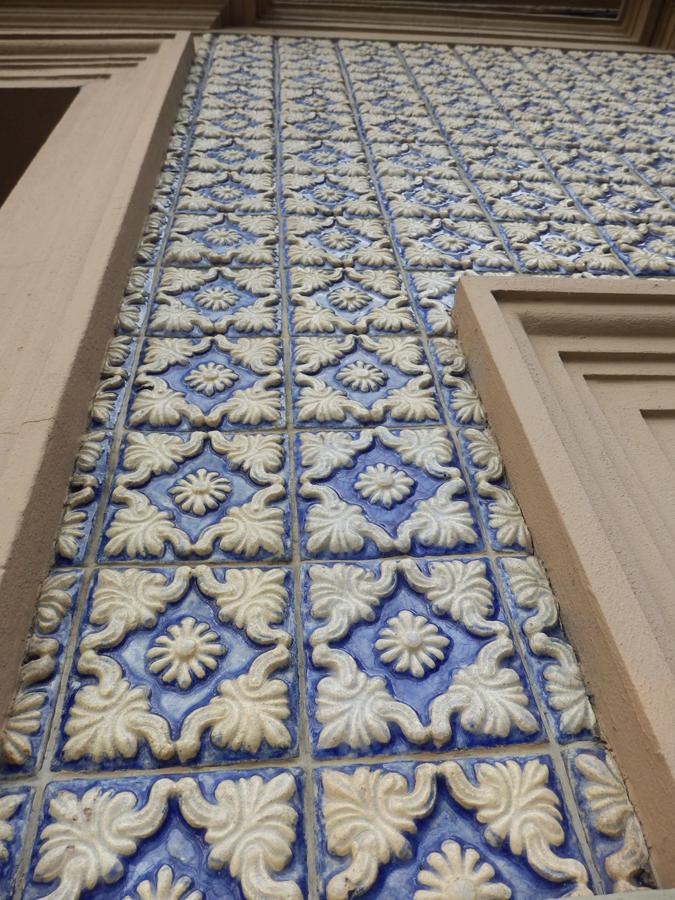
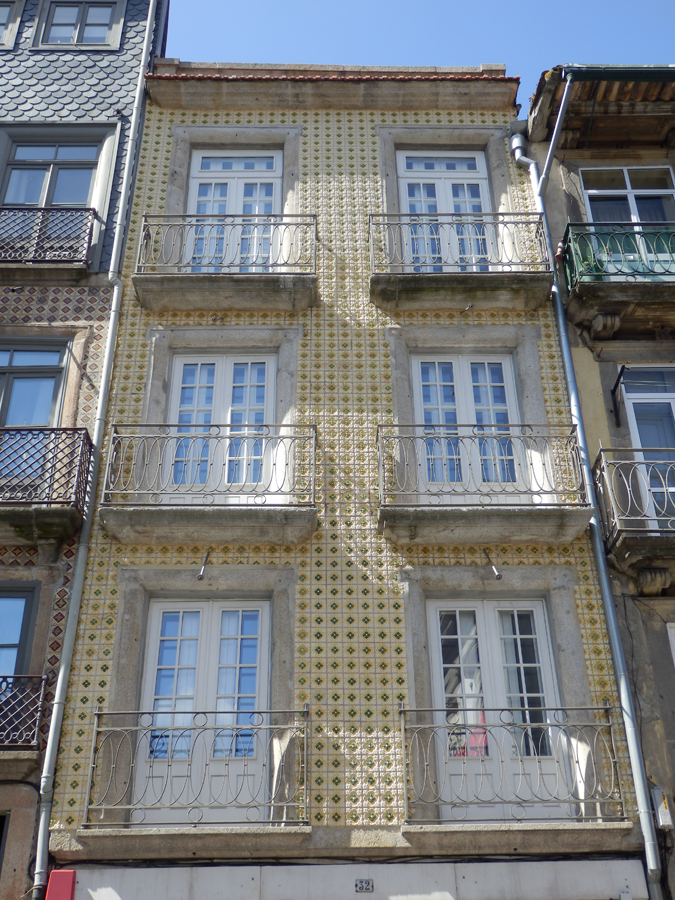
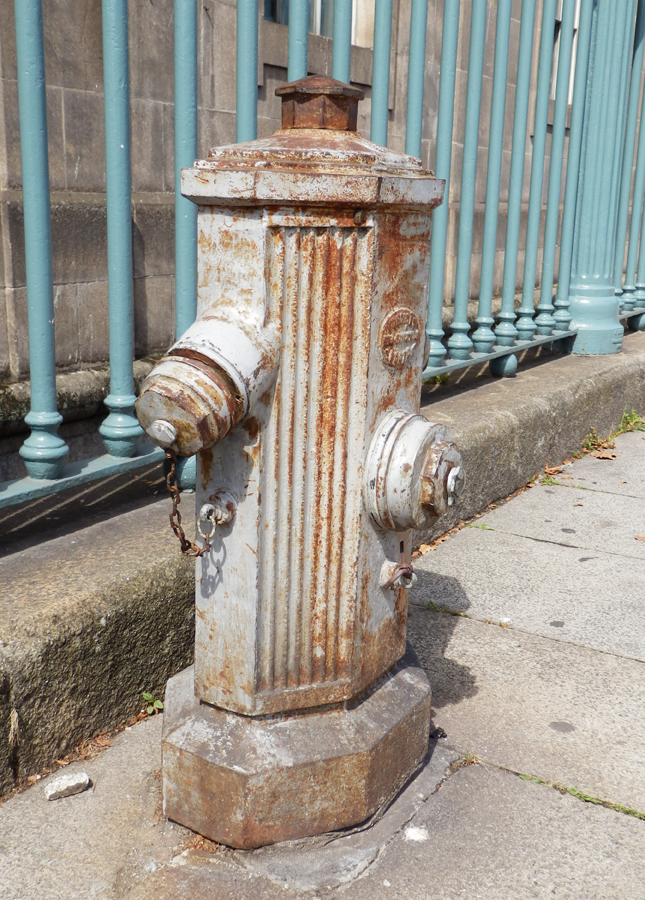
Even the damn fire hydrants are interesting.
We walked along the waterfront, where buskers hustle and restaurants crowd the sidewalks with tables. The area is often packed with tourists but it is a great place to stroll. We peeked at a few menus and they’re slightly more expensive than off the beaten track, but still affordable. The view alone is worth the extra few euros. In fact, we had our last meal in town overlooking the river, an amazing spread of seafood, meat, cheese and olives, along with a bottle of wine – more than enough to feed four people for something like $30.
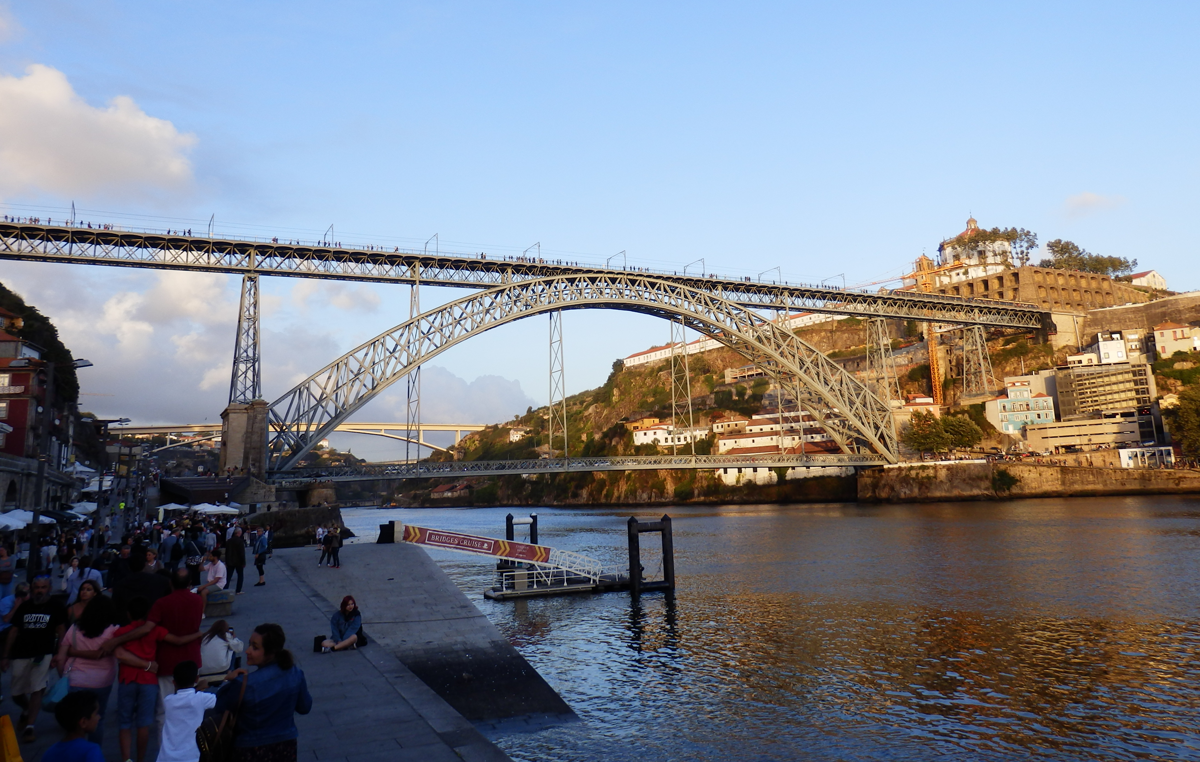
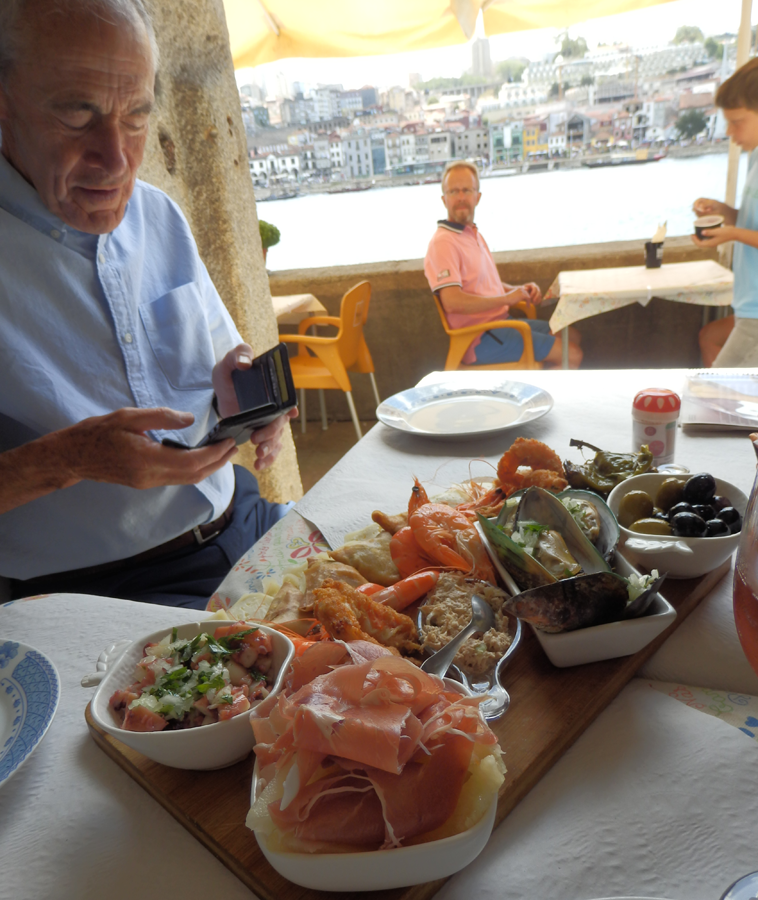
We crossed the Luís I Bridge, designed by engineer Gustave Eiffel, to Vila Nova de Gaia, the town across the river where countless restaurants offer various brands and flavors of port. The waterfront plaza was hosting an Italian festival complete with live music, pizza vendors, and tons of locals and tourists alike. Could a band ask for a better backdrop? They played a set every day of the festival, sometimes followed by another band singing very similar Italian numbers including one heard at Atlanta United games, Bella Ciao. We heard this tune a dozen times over the week, so it has become popular again, perhaps because it has been an anti-fascist hymn since the 1940s.
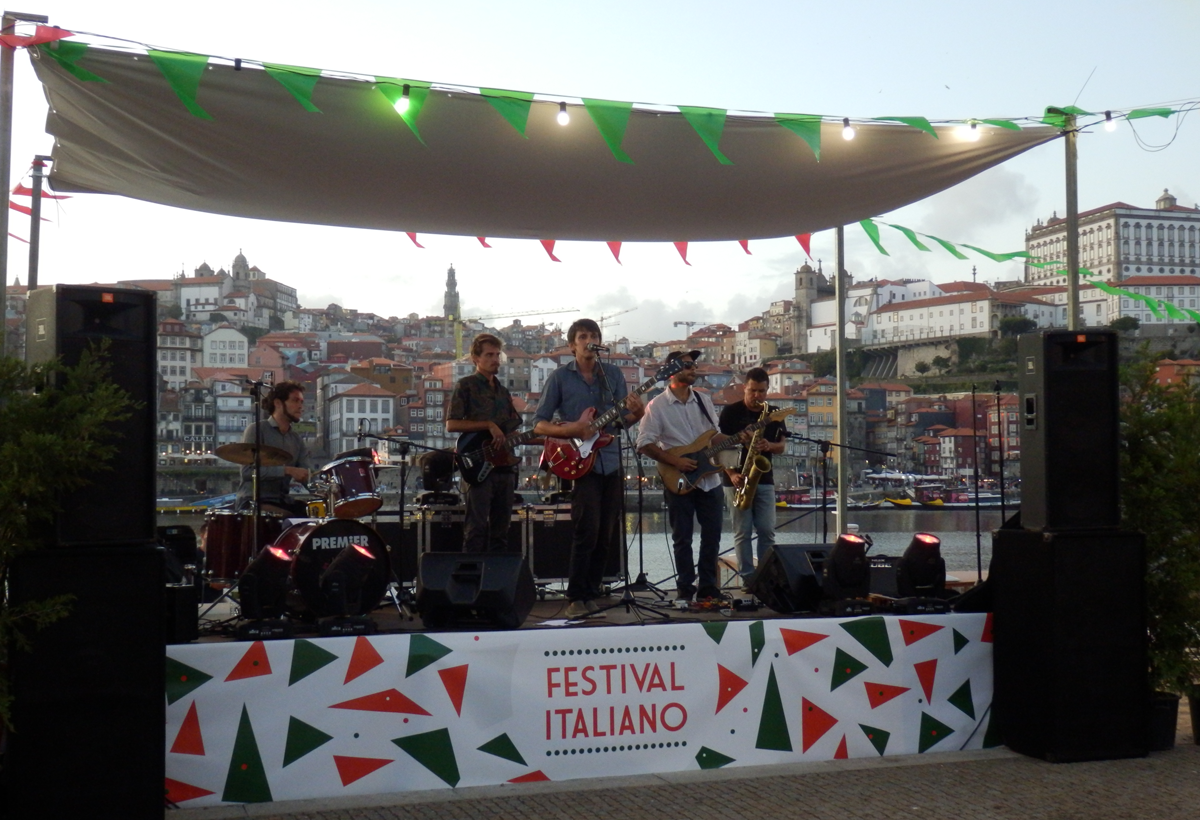
Porto is perhaps even lovelier from across the water. A row of boats once used to carry port downstream bob along the dock while vendors hawk jewelry, sunglasses and amazing pastry. Then the sun began to set and everything went gold and purple.
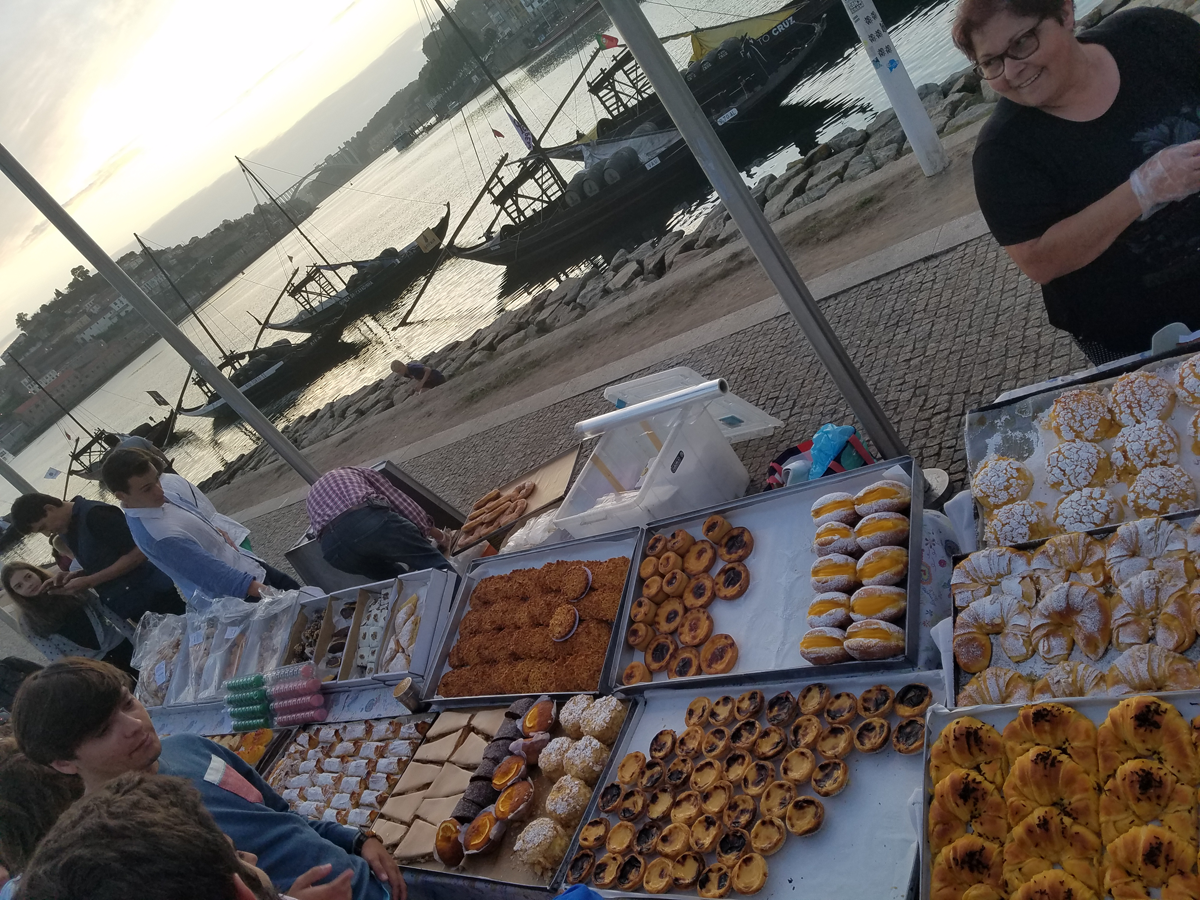
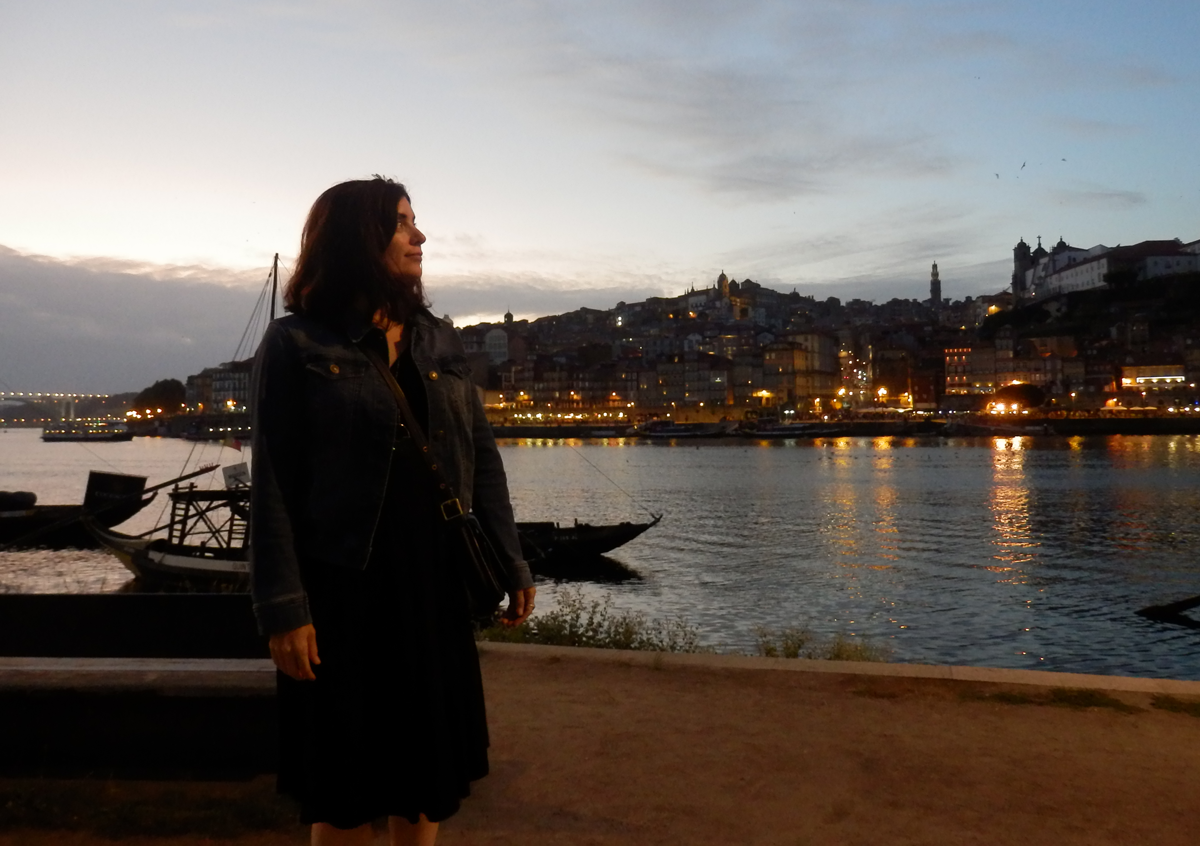

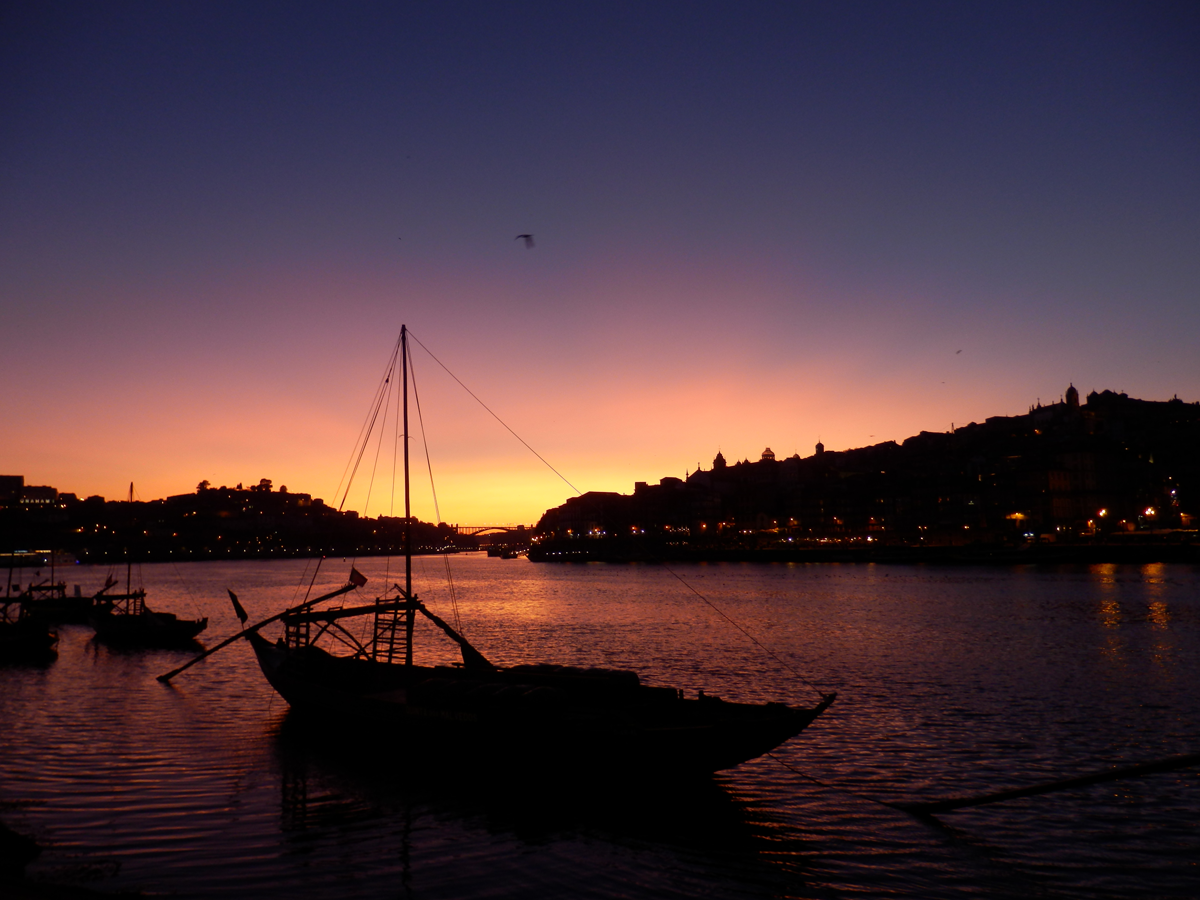
If that’s not enough WOW for you here’s a panoramic shot (click, zoom in, pan around) and another one with the Jarvies. I could stand there eating pastry and giggling at the sunset night after night. It’s ridiculous.
A bit downstream, some of the boats used for wine tours were docked and functioning as nightclubs, some even featuring Portugal’s traditional music, Fado. Other boats ferried people up and down the river on nighttime cruises, booming disco music from decks loaded with dancing partiers. Even the bridge itself is lovely at night. Below, you can see all that remains of an older, suspension bridge that collapsed and was replaced by the Luís I Bridge.
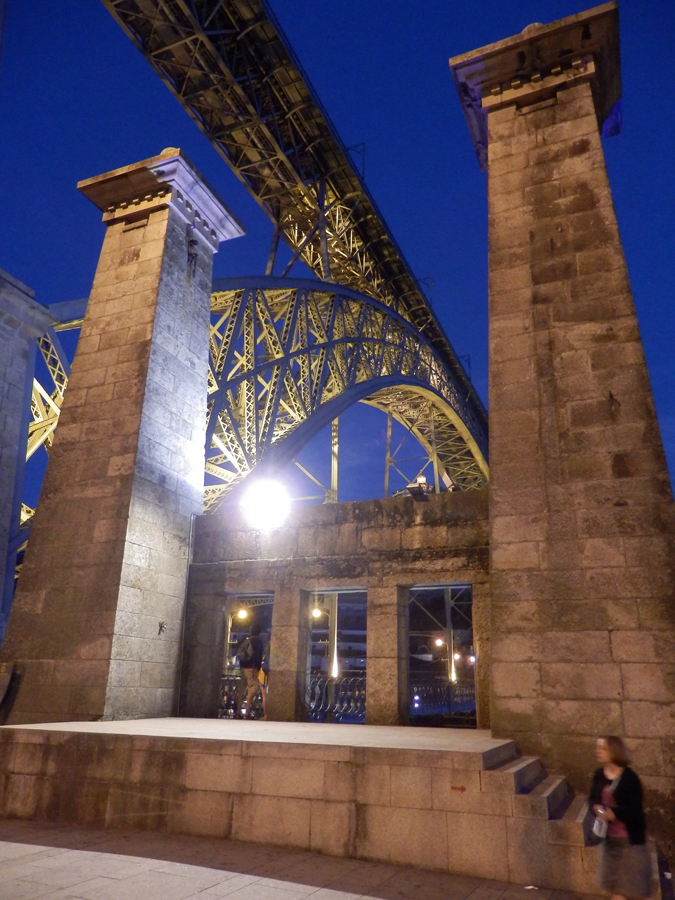
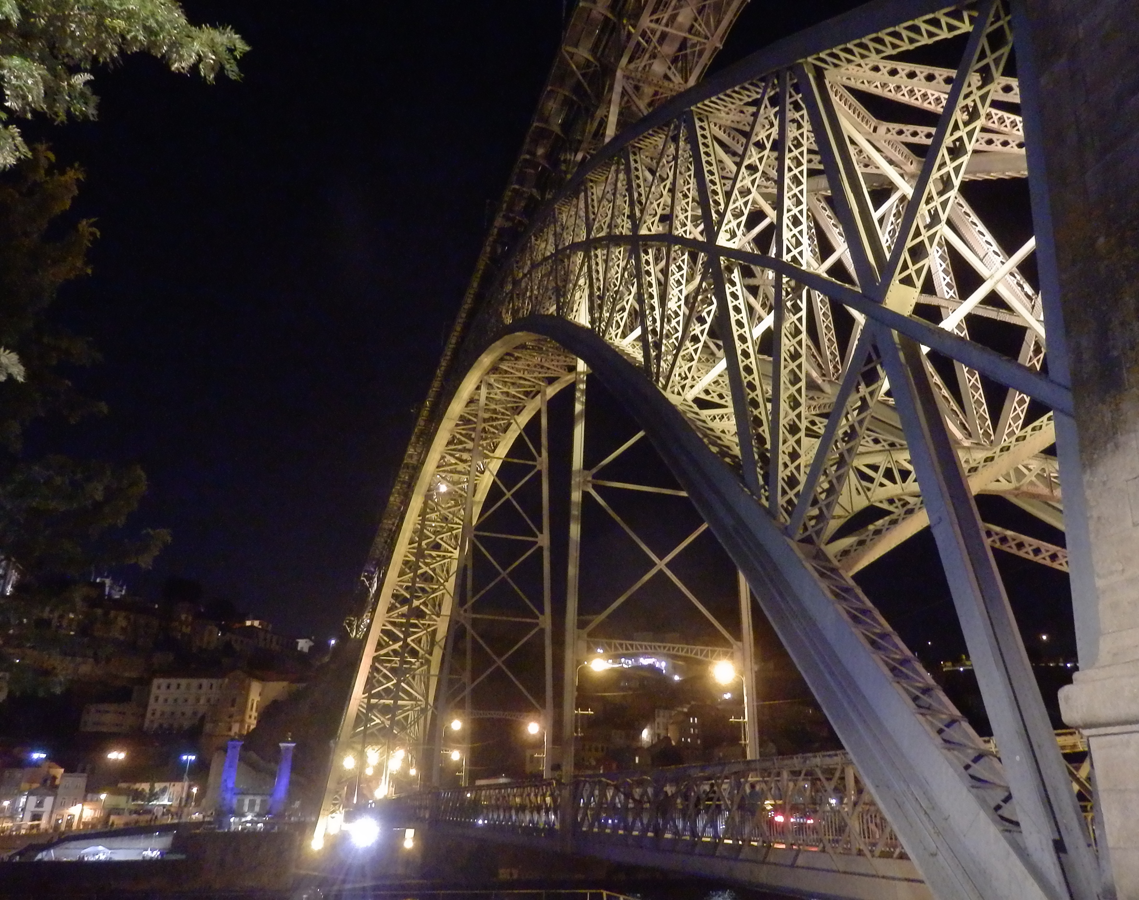
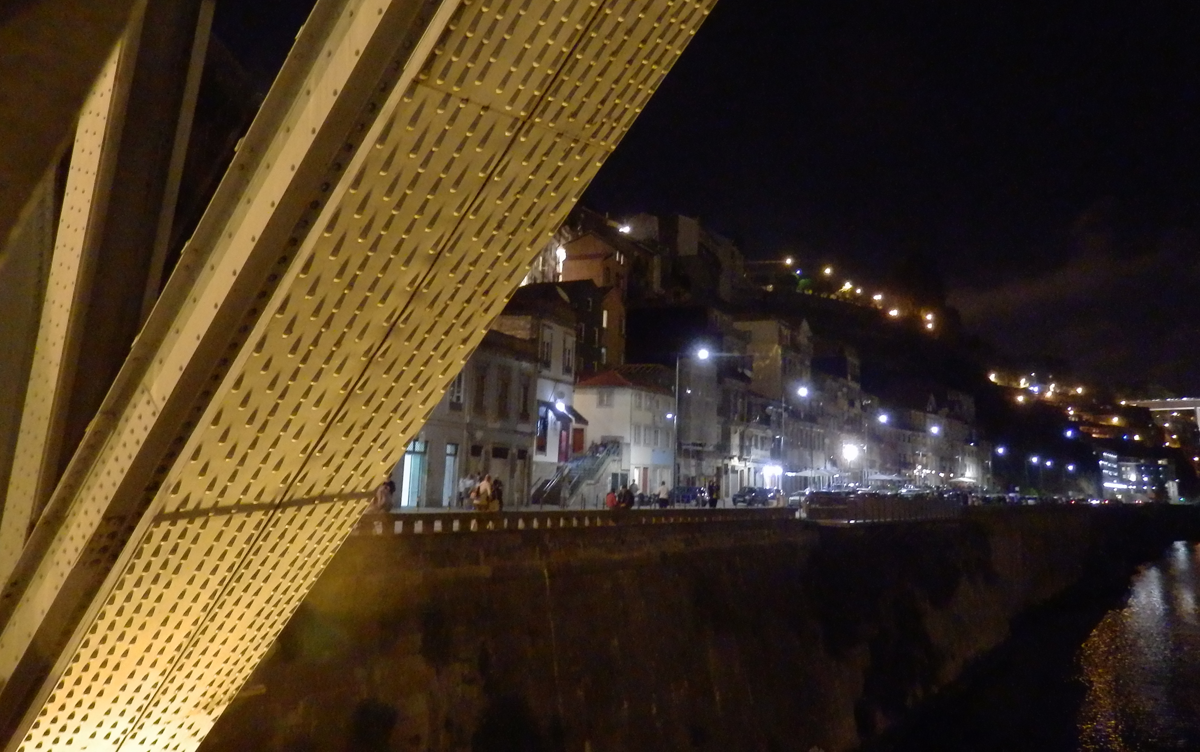
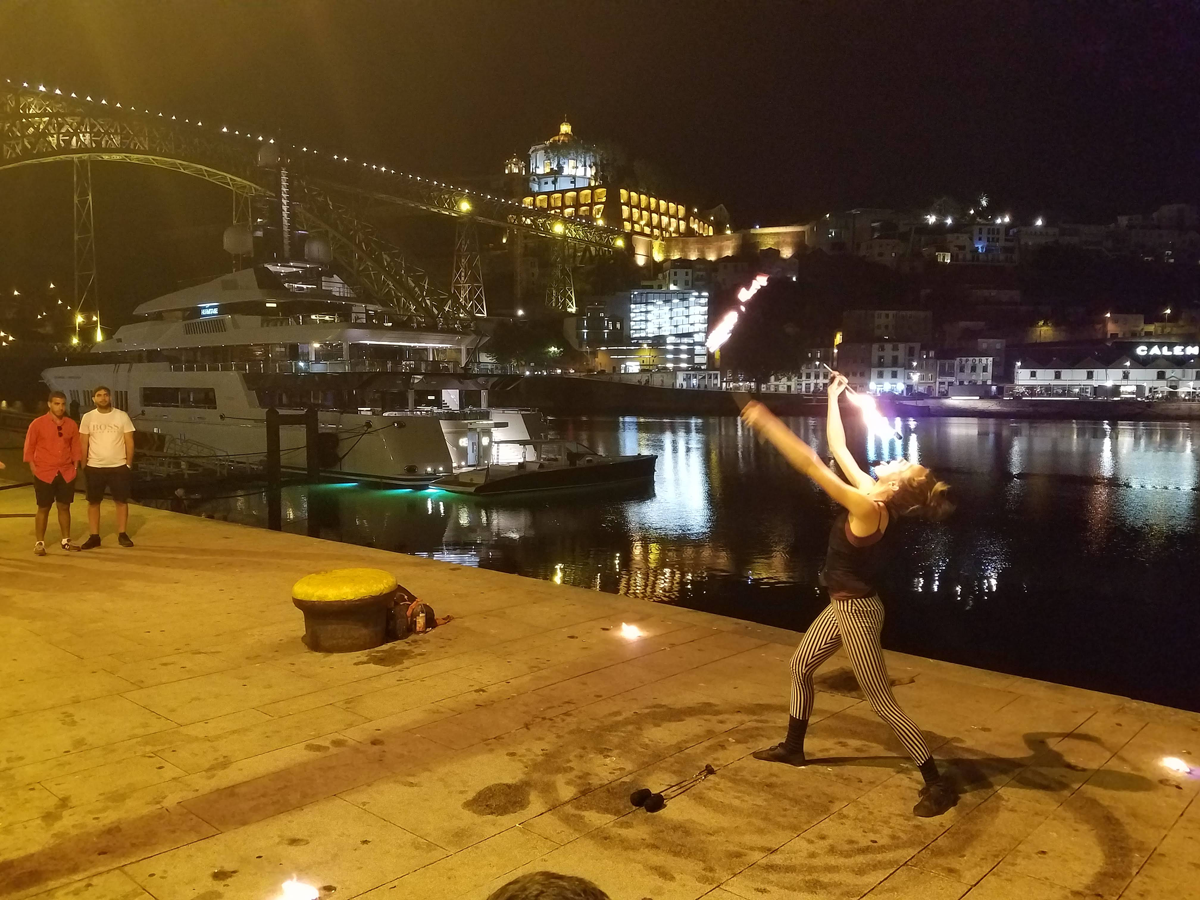
The upper deck of the bridge offers great views of Porto, the river, and Vila Nova de Gaia. Walk over to the other side and you’ll land on a hill with more great views. Here’s a panorama from Vila Nova de Gaia (click, zoom, pan.)
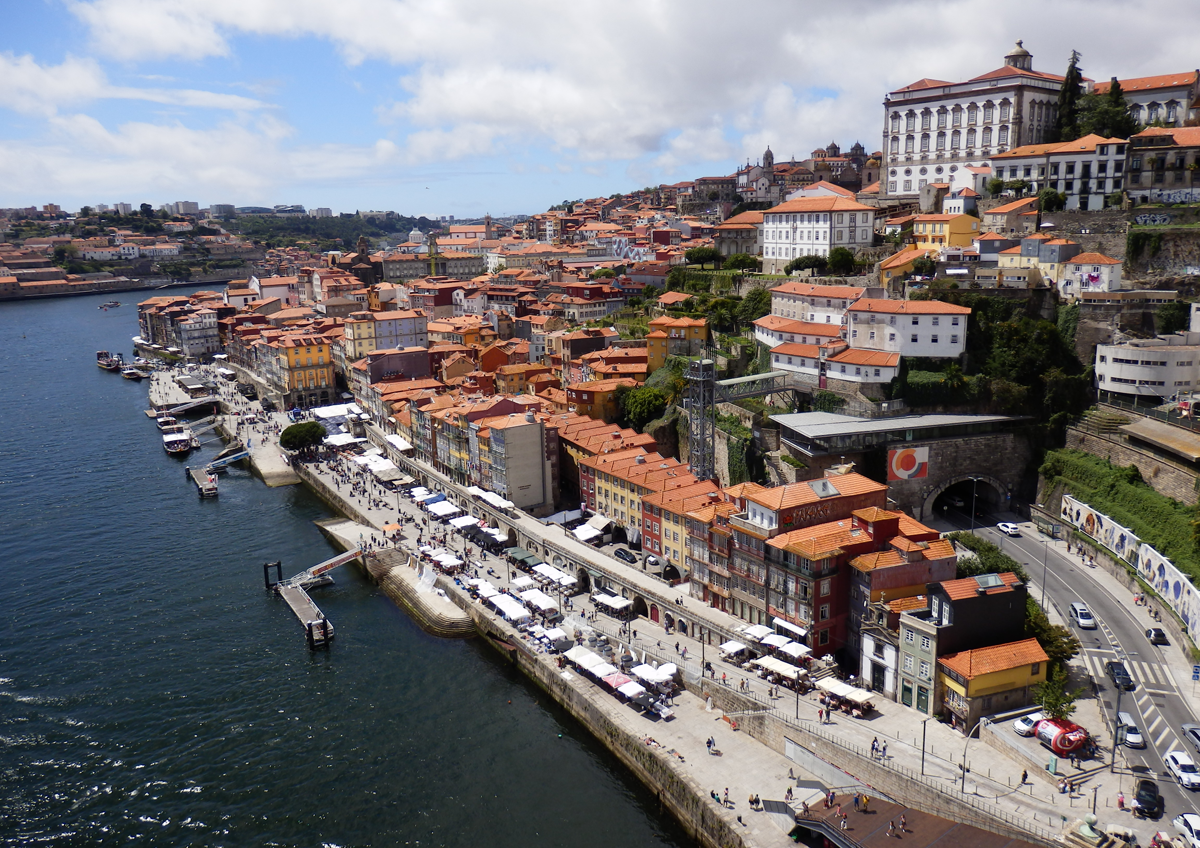
We got tickets for a tour boat to see where all that port comes from. I wasn’t interested in a tour of an actual production facility as much as I was a nice afternoon on the water sipping wine and getting a feel for the countryside. Originally, I’d considered renting a houseboat for a few days on the Duoro but hadn’t been able to find the exact boat I wanted and there was a lot more to see elsewhere in Portugal. From what little I saw of the Duoro it doesn’t look like it could’ve topped our Canal du Midi trip for my 50th a couple of years ago, but we didn’t get very far upstream.
Our particular trip started by taking the train upriver, then riding the boat down. I only mention this because the São Bento Station is another reminder that the modern age, particularly in America, has little use for aesthetics. This thing was started around 1900 and features tile mosaics of various important moments in Portuguese history, stretching almost floor to ceiling. Wiki says, ” There are approximately 20,000 azulejo tiles, dating from 1905–1916, that were composed by Jorge Colaço, an important painter of azulejo of the time.” It’s so pretty there was an Asian couple having their wedding photos taken there.
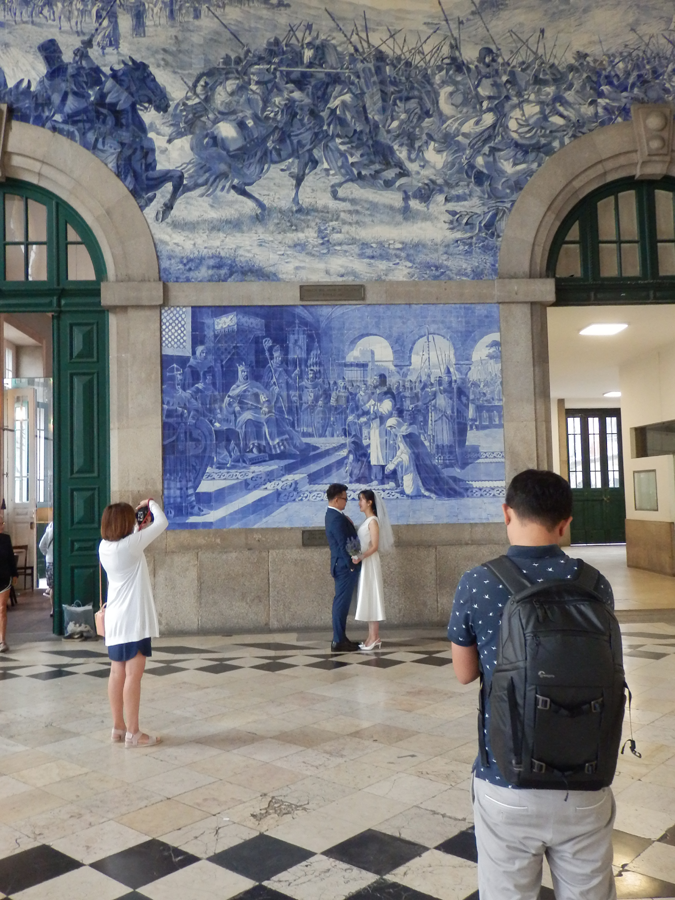
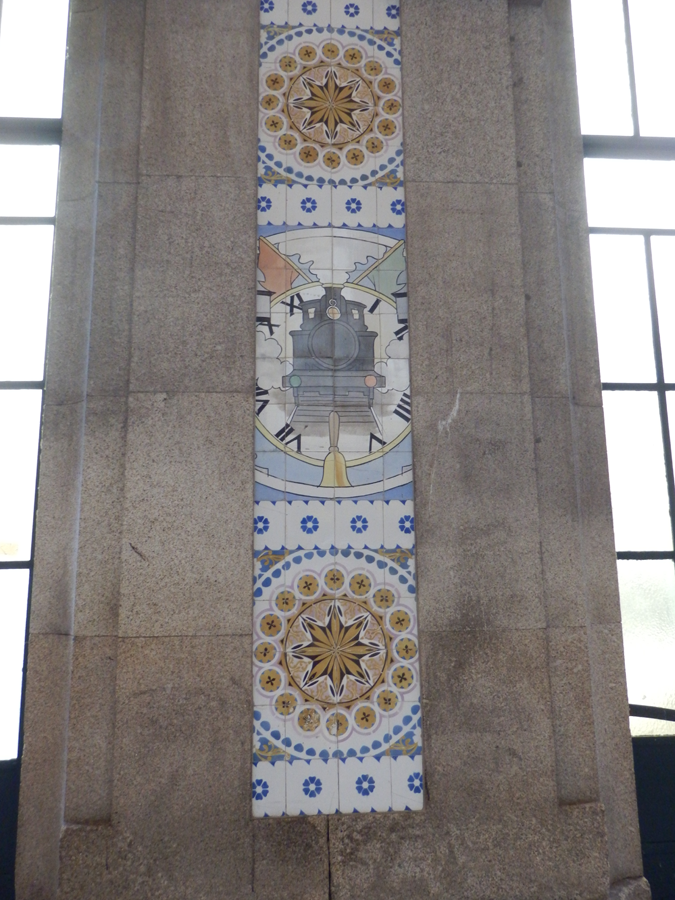
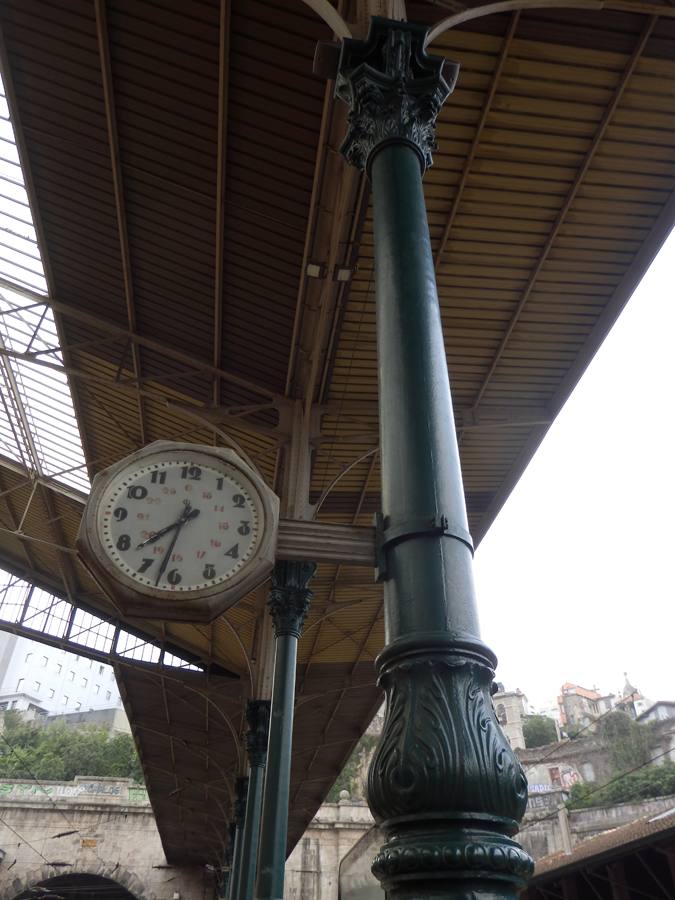
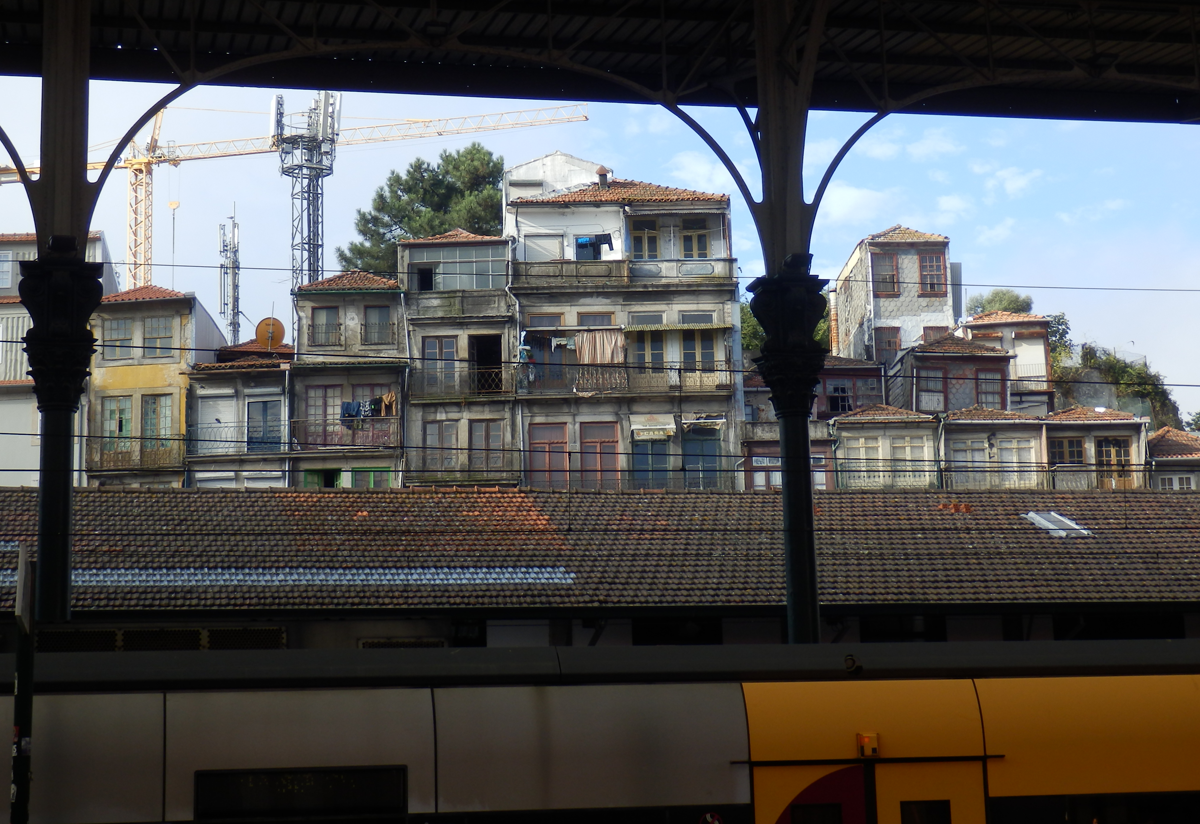
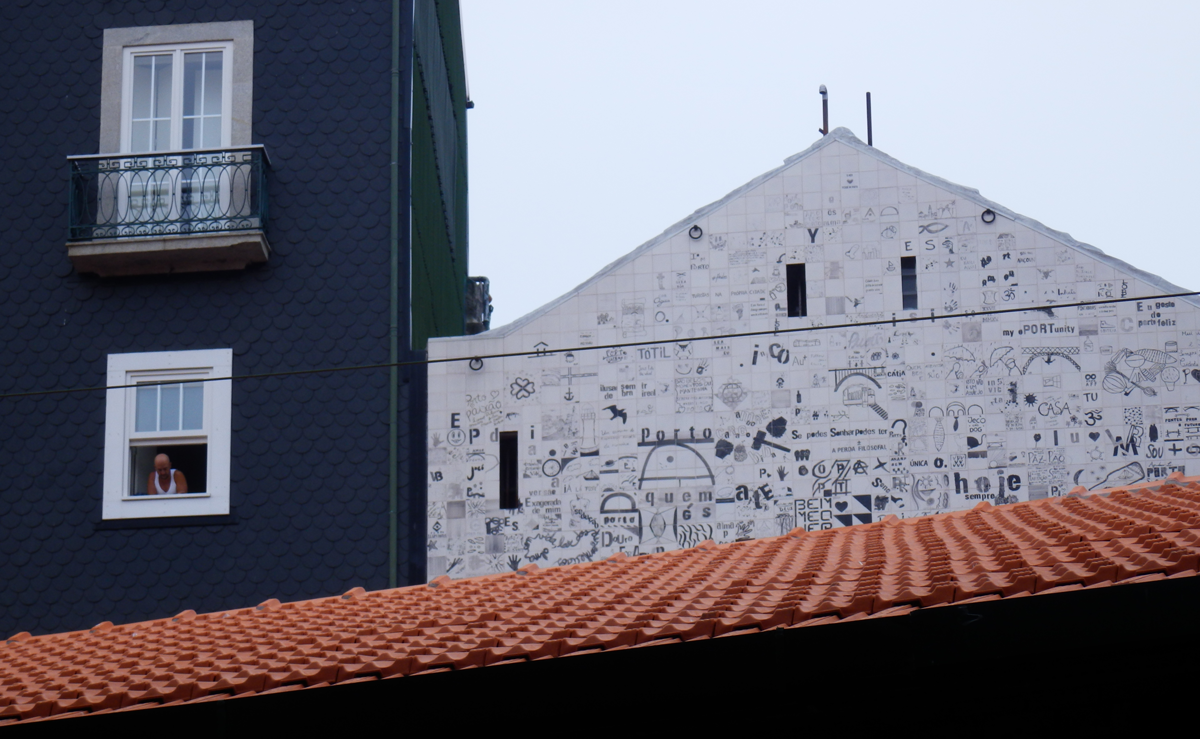
This particular rail route gives you a glimpses of what you’ll see on the river, but only a few hints. Our train had been delayed, so we didn’t have a lot of spare time to explore the town where we boarded the boat, so I can’t say much about inland, small-town Portugal. We didn’t get a car this trip and all my travels were by rail or boat, so I didn’t get out of the major cities except for this brief adventure on a well worn path. Next time…
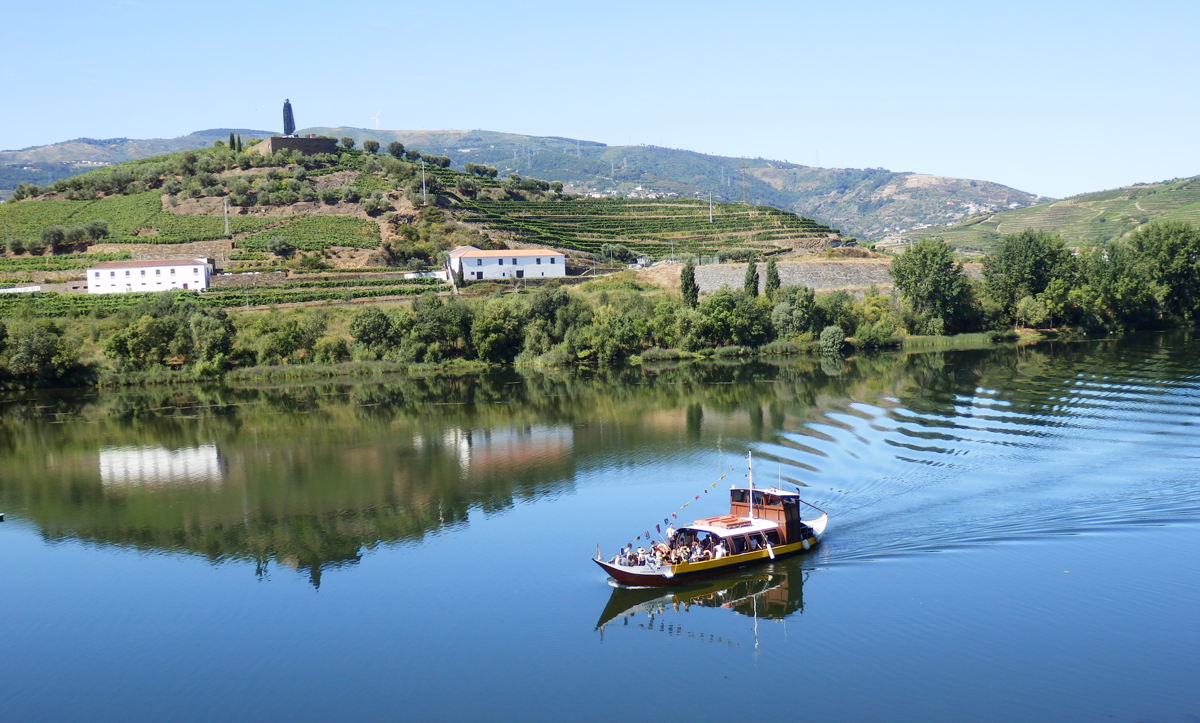
This wasn’t our boat. Ours was much larger and not cute in any way. As we waited in line, I realized I’d made a critical error in not bringing a hat. The sun in southern Europe can be a bit much and I would’ve had to slick back my entire scalp with sunscreen to avoid a savage burn, or stay inside the boat the entire trip. Fortunately, hordes of wayward youth were there to provide a variety of cheap head coverings to desperate tourists. By the time we boarded, half the passengers were wearing identical hats. I went for the cheapest, silliest one.
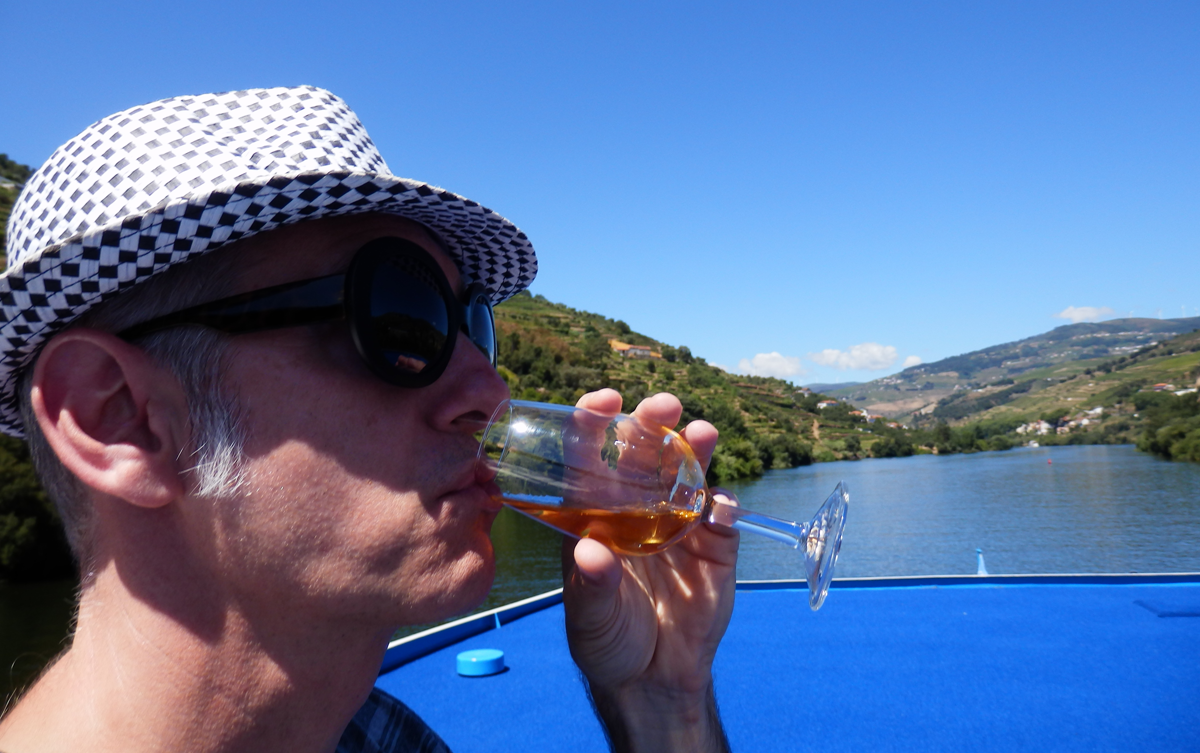
The cruise included a variety of ports, as well as lunch. I spent most of the time on the upper deck, admiring the low hills lined with vineyards. There are both old and new houses along the river – some elegant 18th century, some crumbling stone shells, some hyper-minimalist modern style. We also passed a few waterfront parks with sandy beaches where guys on jet skis sped out to use our boat’s wake as a ramp. Smaller tour boats and even a few private motorboats rolled by.
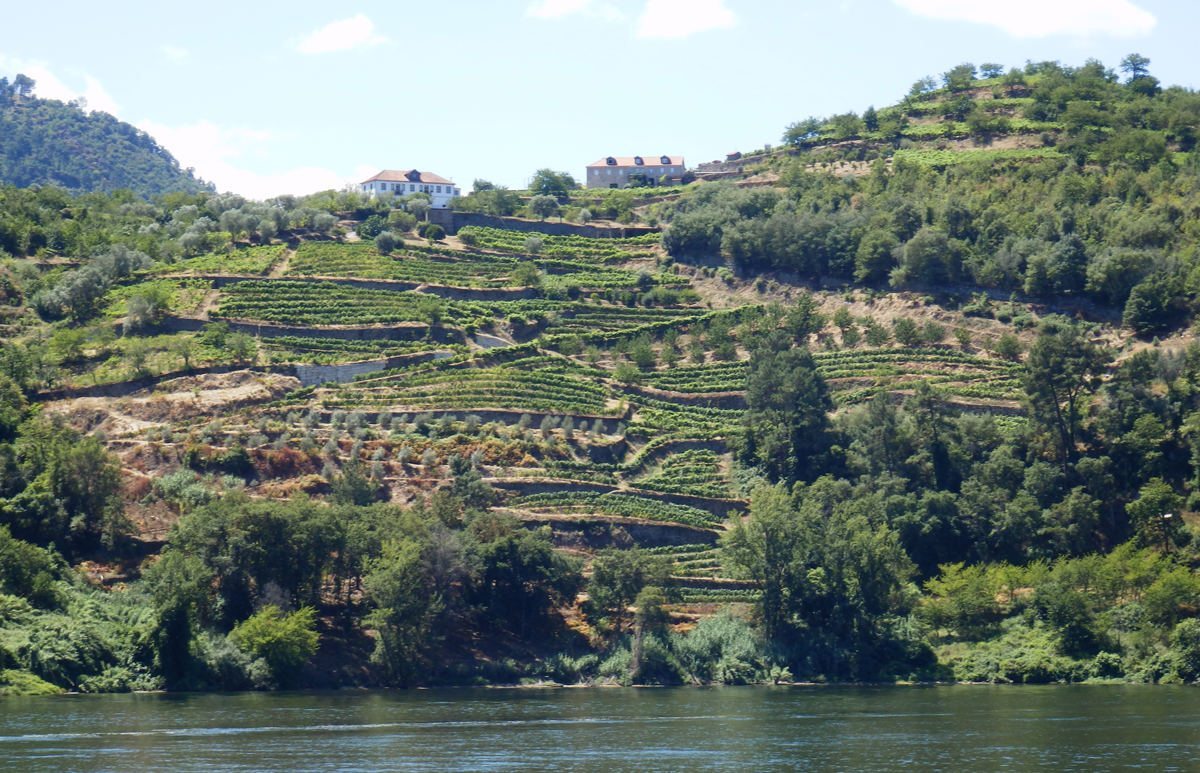
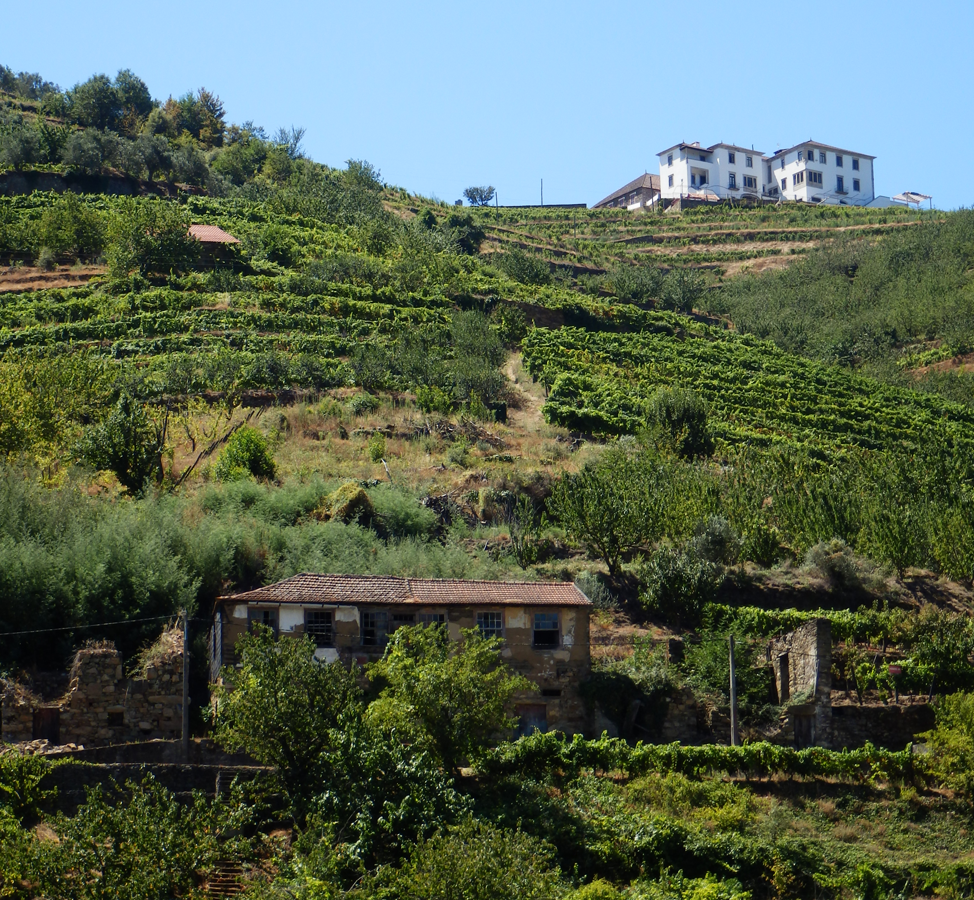
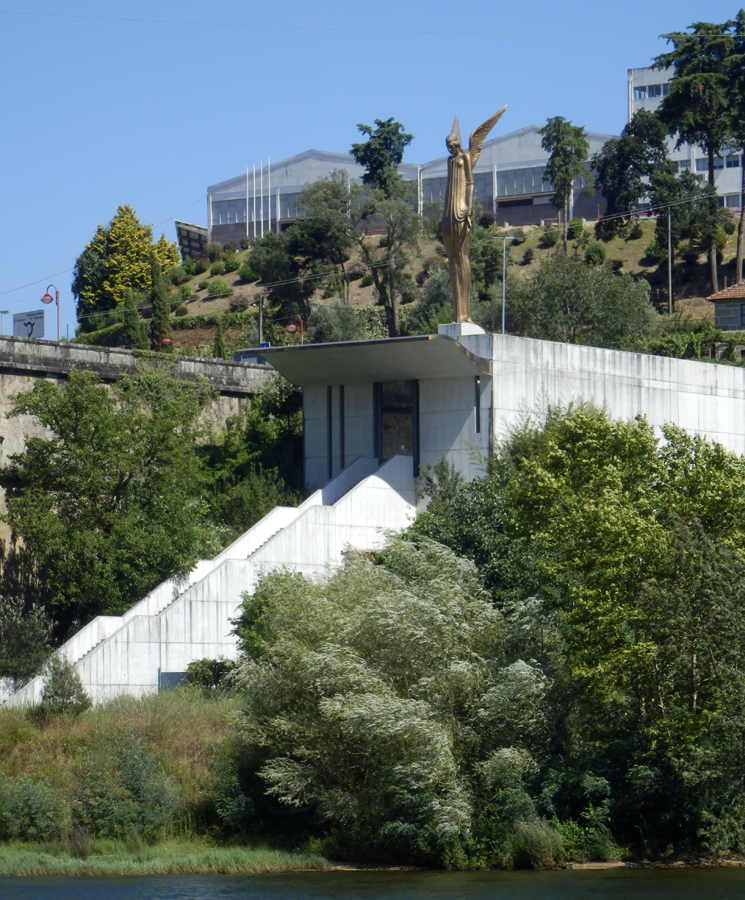
After navigating dozens of locks in France, one of the highlights of the tour for me was going through the deepest lock in Europe. Our big tour boat, a smaller tour boat and a private motorboat got into the chamber and then descended over 100′. It’s tough to see in this photo but those are people on the bridge at the top looking down.
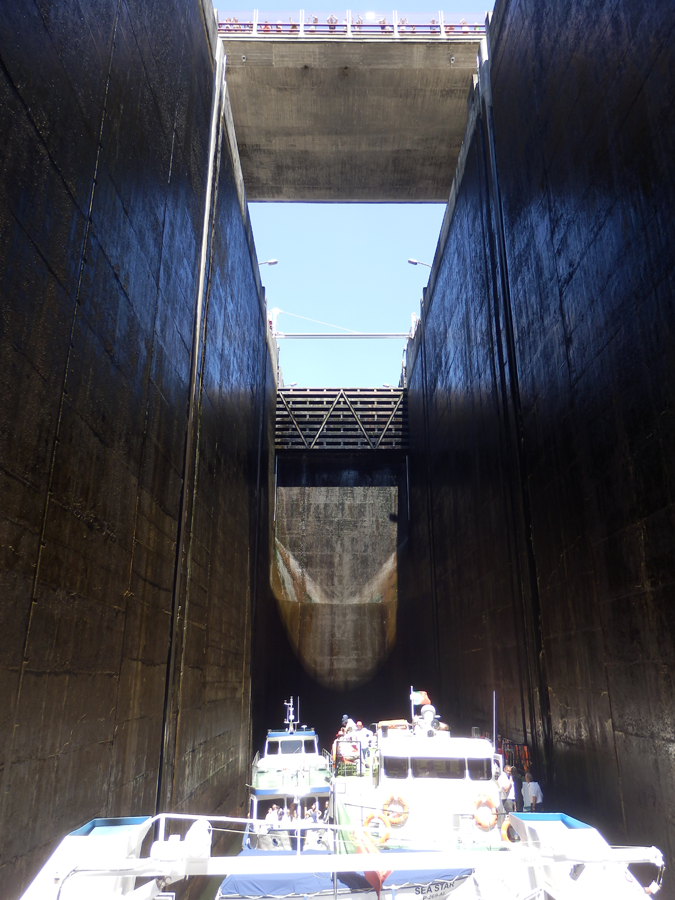
I took a panorama from the bottom looking up (click, zoom, pan.) Eventually, the pool was lowered to the level of the river and the huge doors began to open, like something out of a fantasy movie. Amazing.
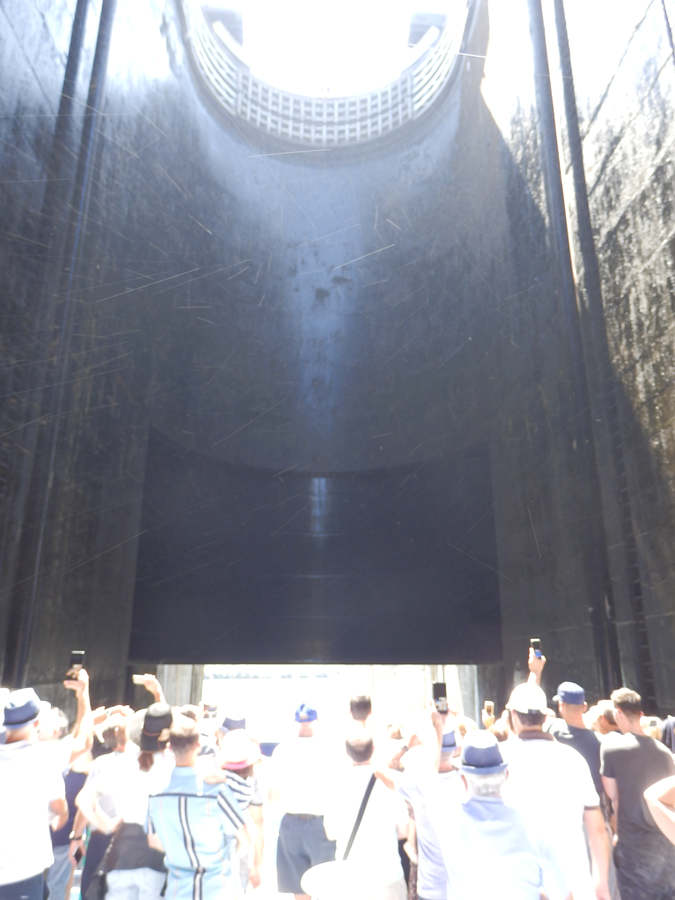
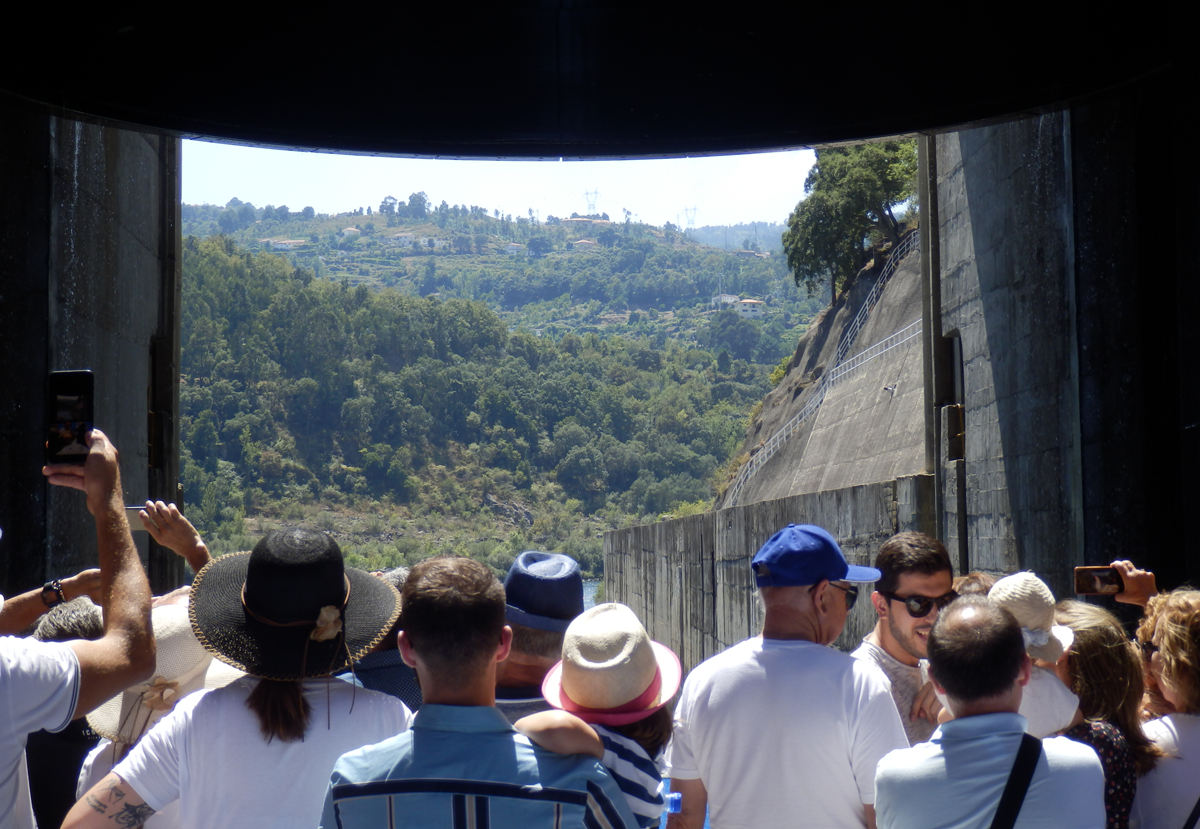
After sampling port in various places and having my fill of it on the boat tour, I decided it’s not really my beverage of choice. It’s a bit thick and on the sickly side of sweet. The food on the boat was fine. The piped-in music was tolerable, even when the guides started doing the Macarena with a few kids and older ladies.
We rolled back into Porto, giving us another view of the amazing bridge, as the sun dropped below the hill.
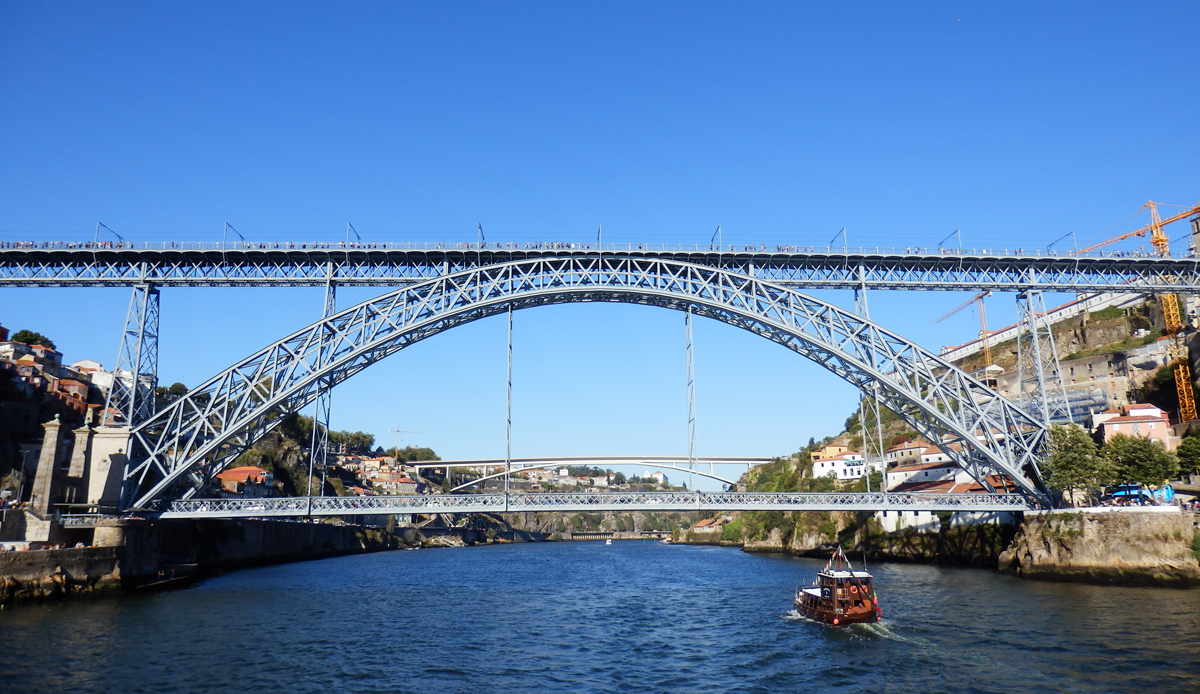
In the morning we returned to Lisboa for one last night, detailed in our previous review, and boarded a plane home. We got a free upgrade to first class, my first time ever, making the transatlantic leg considerably more comfortable.
In researching things for this review, I found a ton of stuff I wish I’d seen in Porto, and in Portugal overall. Time is the slayer of all things, including vacations, but we did what we could. I hope to get back there one of these years!